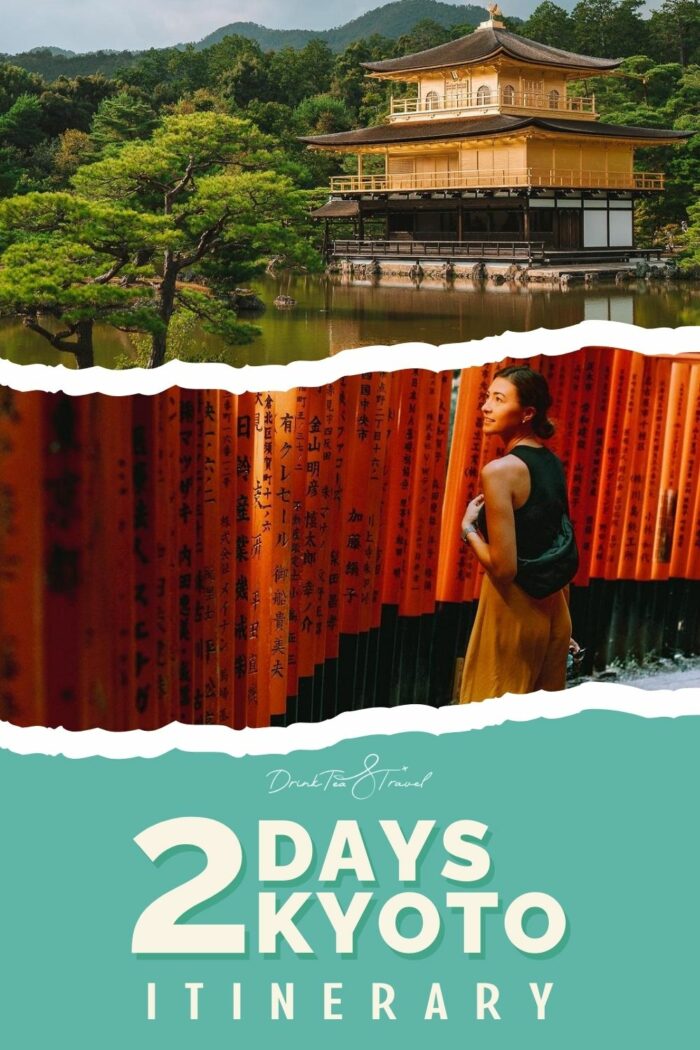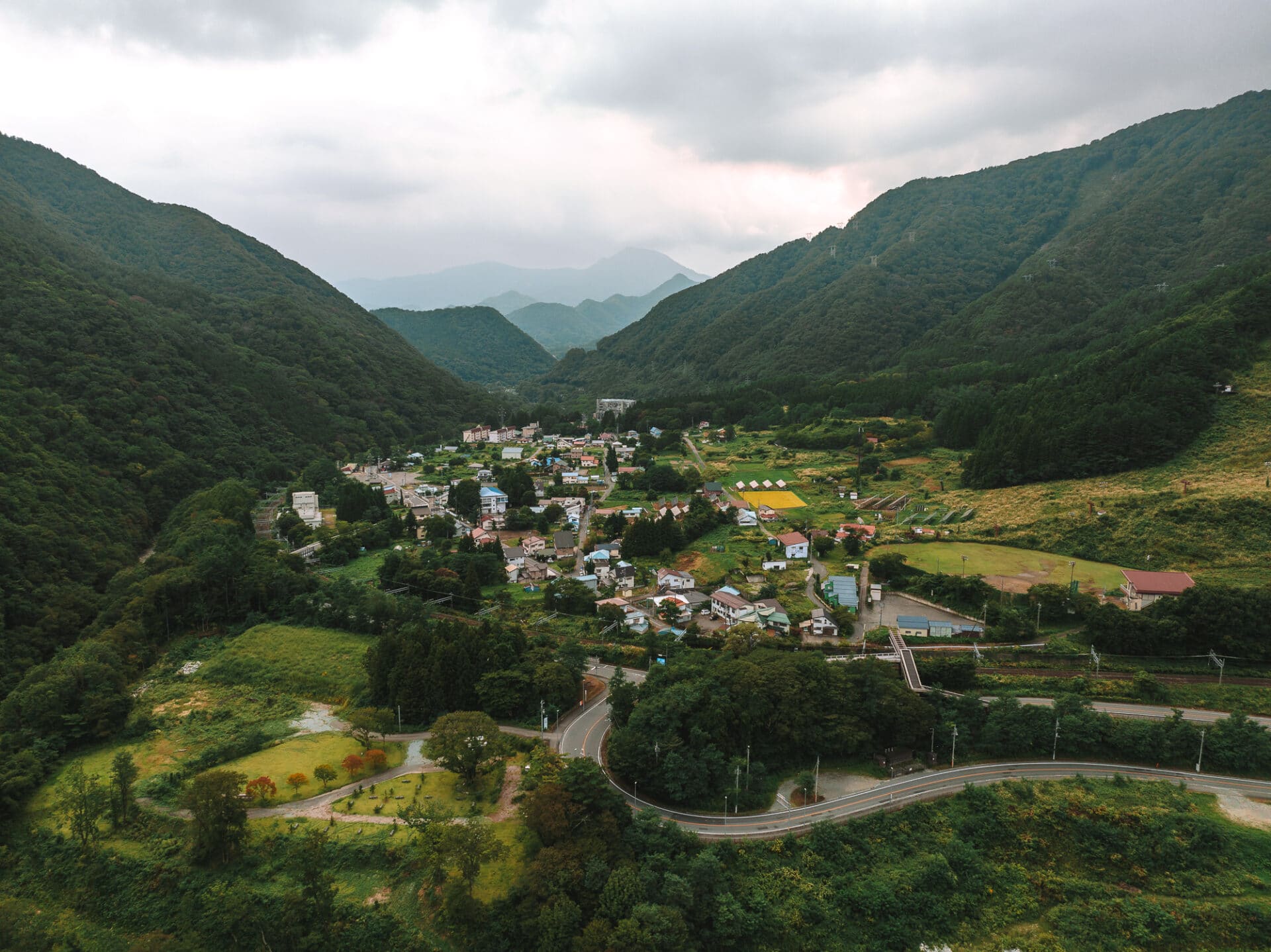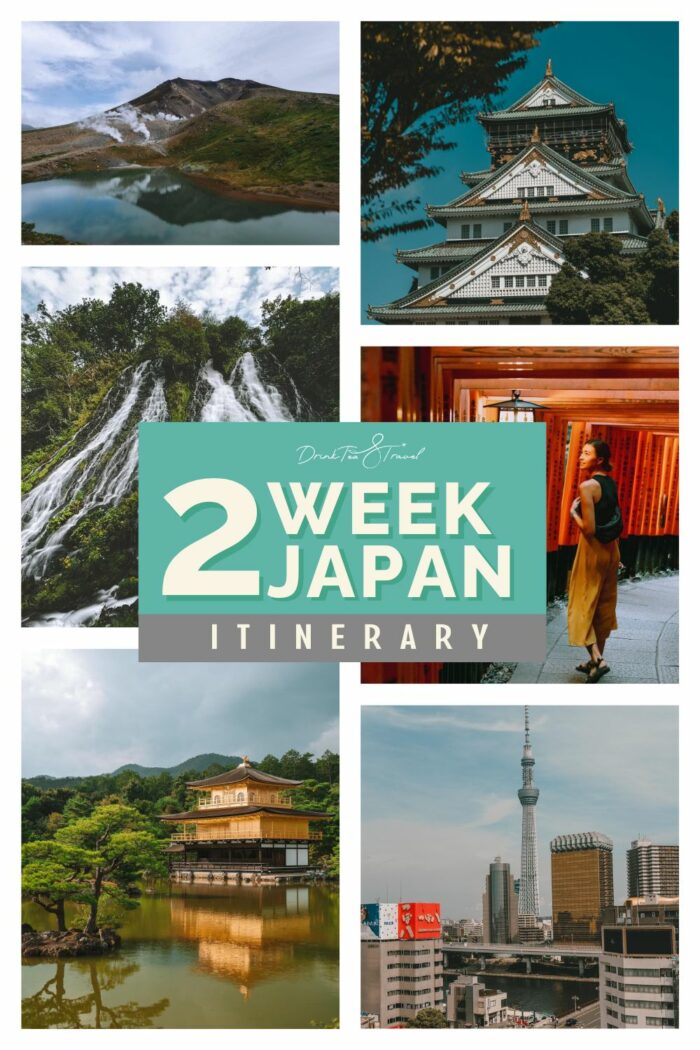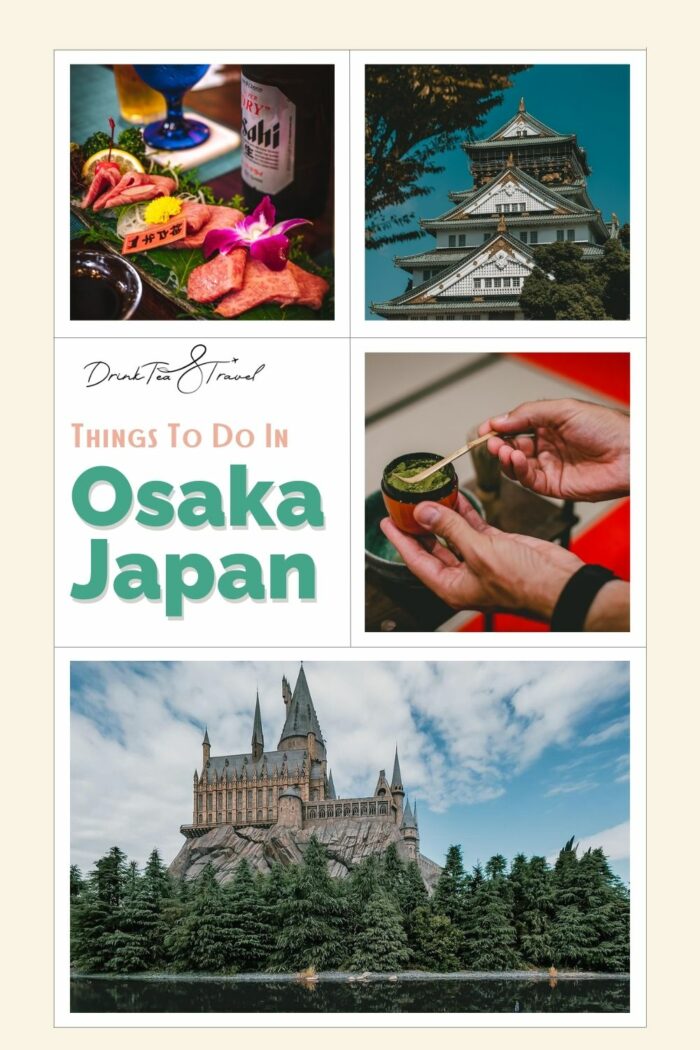Kyoto is, undoubtedly, one of many highlights of any journey to Japan. As soon as the capital for greater than 1000 years, Kyoto stays the heart of conventional Japanese tradition and one of many largest cities within the nation.
Kyoto attracts hundreds of thousands of tourists yearly, and it’s not laborious to see why, because it’s simply one of the stunning Japanese cities.
Town is legendary for its Buddhist temples, imperial palaces, Shinto shrines, conventional wooden homes, kaiseki eating and geisha entertainers. It’s additionally house to 17 UNESCO World Heritage Websites, together with the Golden Pavilion and the Tenryu-ji Zen temple close to the well-known bamboo forest.
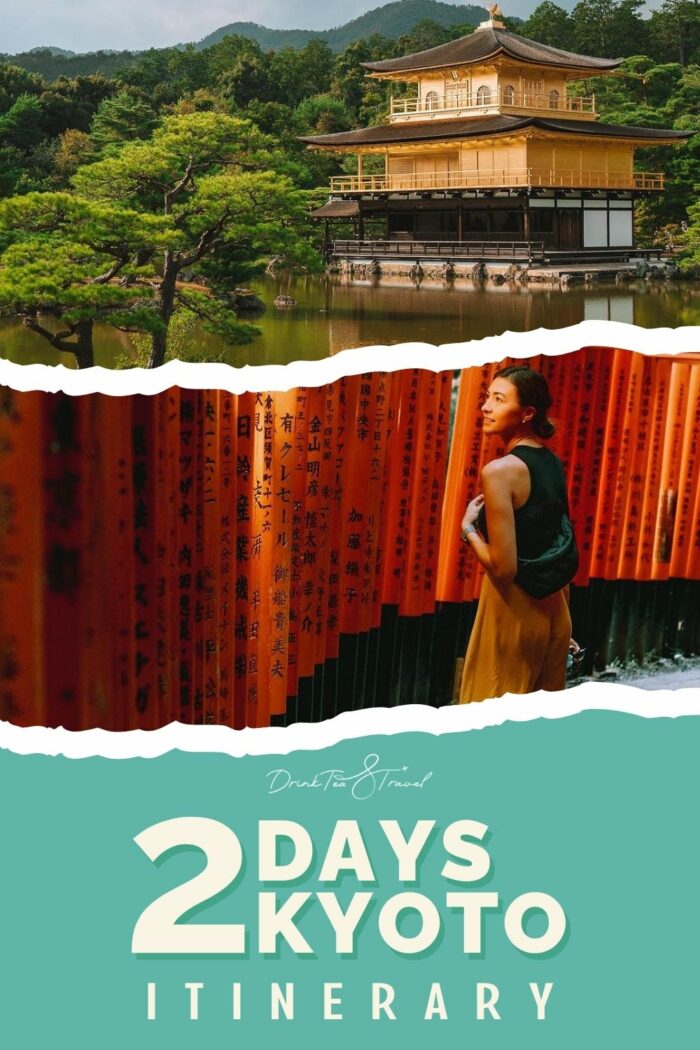
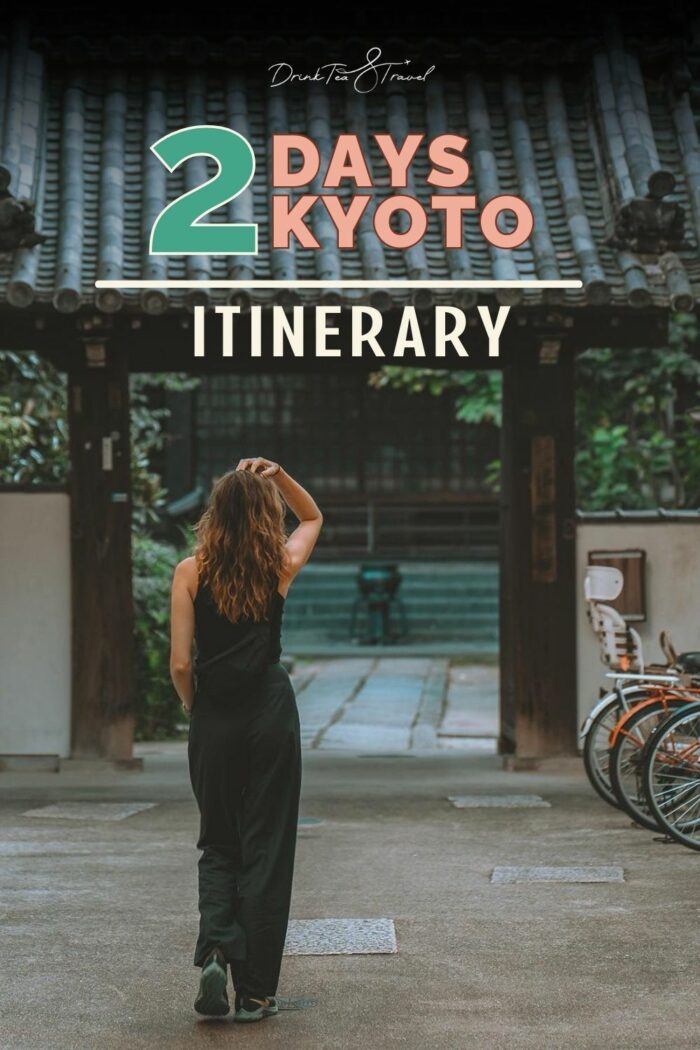
We visited Kyoto for 4 days as a part of our Japan journey, and fell in love with this conventional metropolis. We jam-packed our itinerary with stops at essential websites and sights and made probably the most of our go to. Whereas we completely advocate spending various days in Kyoto, we acknowledge that many vacationers are quick on time and need to squeeze in the perfect of Kyoto into a brief 2 day go to.
If this sounds such as you, learn on to find our recommended Kyoto 2-day itinerary, which covers all the perfect sights, actions and must-see districts!
So, let’s dive in!
Easy methods to Get to Kyoto
Situated southwest of Tokyo, Kyoto is comparatively simple to achieve both by air or by land. Probably the most handy choice to achieve Kyoto is by aircraft or by practice.
As sustainable travellers, we at all times encourage methods to cut back your carbon footprint, so we strongly advocate choosing a slower, extra scenic route by practice.
By Air
The closest airport to Kyoto is Itami Airport (Osaka Worldwide Airport) in Osaka, which is situated about one hour by bus from downtown Kyoto. A number of day by day flights join Itami Airport with Tokyo’s Haneda Airport, with the flight time taking about an hour.
An alternative choice is to reach at Kansai Worldwide Airport, which presents day by day worldwide and home connections. Notice that Kansai Airport is situated over an hour from Kyoto, which makes for an extended journey if travelling from Tokyo.
The JR Haruka Restricted Specific practice from Kansai Airport can take you to Kyoto practice station in 70 minutes.
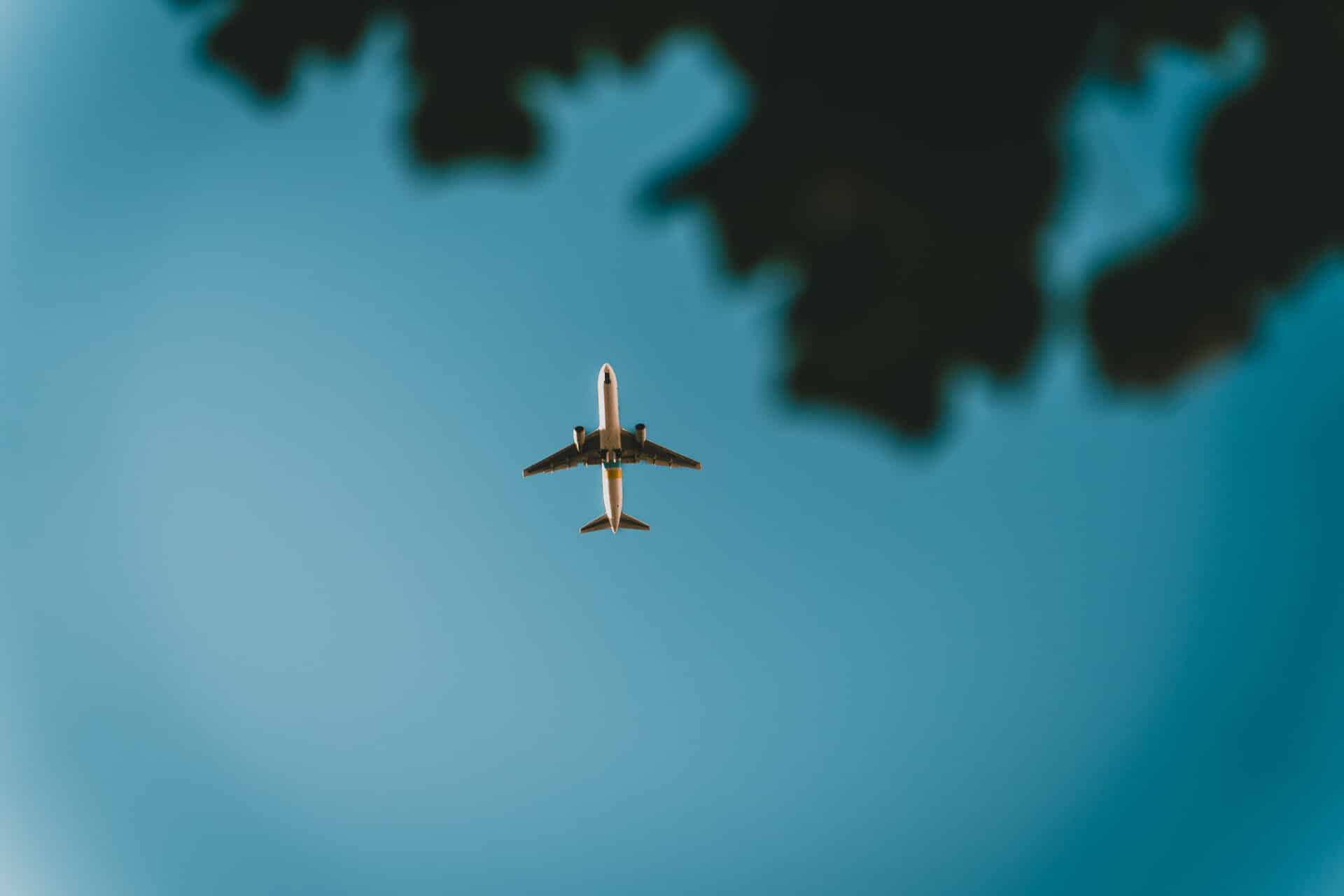 Airplane in Japan
Airplane in Japan
By Prepare
The practice is definitely probably the most environment friendly choice for travelling to Kyoto for those who’re already in Japan. The Tōkaidō Shinkansen bullet practice connects Tokyo and Kyoto on a direct route. There are three providers on this line departing usually: Nozomi, Hikari, and Kodama; the journey time and price differ by service.
Nozomi certain service presents the quickest choice, taking round 140 minutes for the journey and costing simply over 14,000 Yen. You’ll be able to board any Tōkaidō Shinkansen service at Tokyo Station, Shinagawa Station, or Shin-Yokohama Prepare Station.
Arriving at Kyoto Prepare station is a breeze. The Station is situated proper within the centre of the town, making it simple to get to your lodging by subway or taxi/Uber upon arrival.
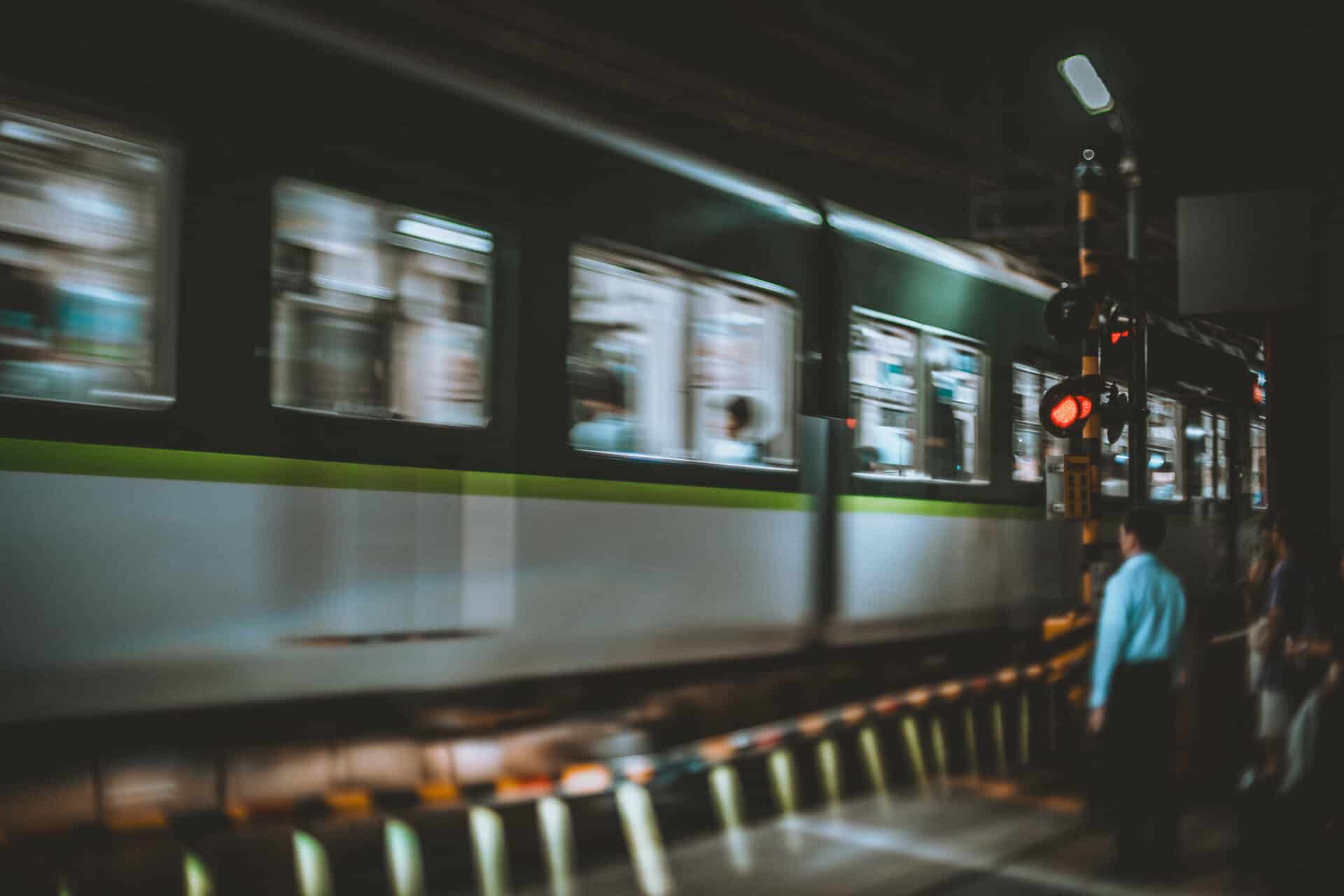 Prepare in Kyoto
Prepare in Kyoto
Easy methods to Get Round Kyoto
There are a lot of methods to get round Kyoto. With trains, subways, buses, taxis, ride-share providers and even by bicycle or strolling choices, it’s a metropolis that’s simple to navigate.
Many sights in Kyoto are situated within the central a part of city, so decreasing your carbon footprint and getting your steps in by strolling between your locations is straightforward. We simply clocked in upwards of 20,000 steps whereas exploring Kyoto.
Kyoto Metropolis Subway, JR Traces, and busses supply an incredible different to strolling in Kyoto. Fares are often $1-$3 per journey and will be paid through IC playing cards such because the Kansai One Go. You may also buy a multiple-day Japan Rail Go to economize on JR Traces.
Finest Time to Go to Kyoto
Because of good climate, sakura (cherry blossom) and fall colors make Spring and Fall the busiest seasons in Kyoto. However the reality is, there are perks and drawbacks to any season.
Spring
Spring is commonly thought-about the perfect time of yr to go to Kyoto, largely as a result of it’s additionally cherry blossom season. The climate is sort of delicate in spring, and strolling round and exploring the town on foot is comfy. You’ll be able to count on temperatures to be within the mid-60s °F (18 °C) in the course of the day, dropping to round 45 °F (7 °C) at evening.
The draw back of cherry blossom season is that costs improve, and you’ll count on a busy crowd of tourists at most sights.
Summer season
The temperatures rise fairly rapidly come June, and the humidity additionally arrives because the moist season peaks in Japan. Daytime temperatures vary from the low 80s °F (28 °C) to the low 90s °F (32 °C), with a mean of 5 to eight inches of precipitation per thirty days in summer season.
Summer season brings many downpours and sweltering temperatures. This climate could make it uncomfortable to maneuver across the metropolis, but it surely does imply there are far fewer crowds and cheaper lodging.
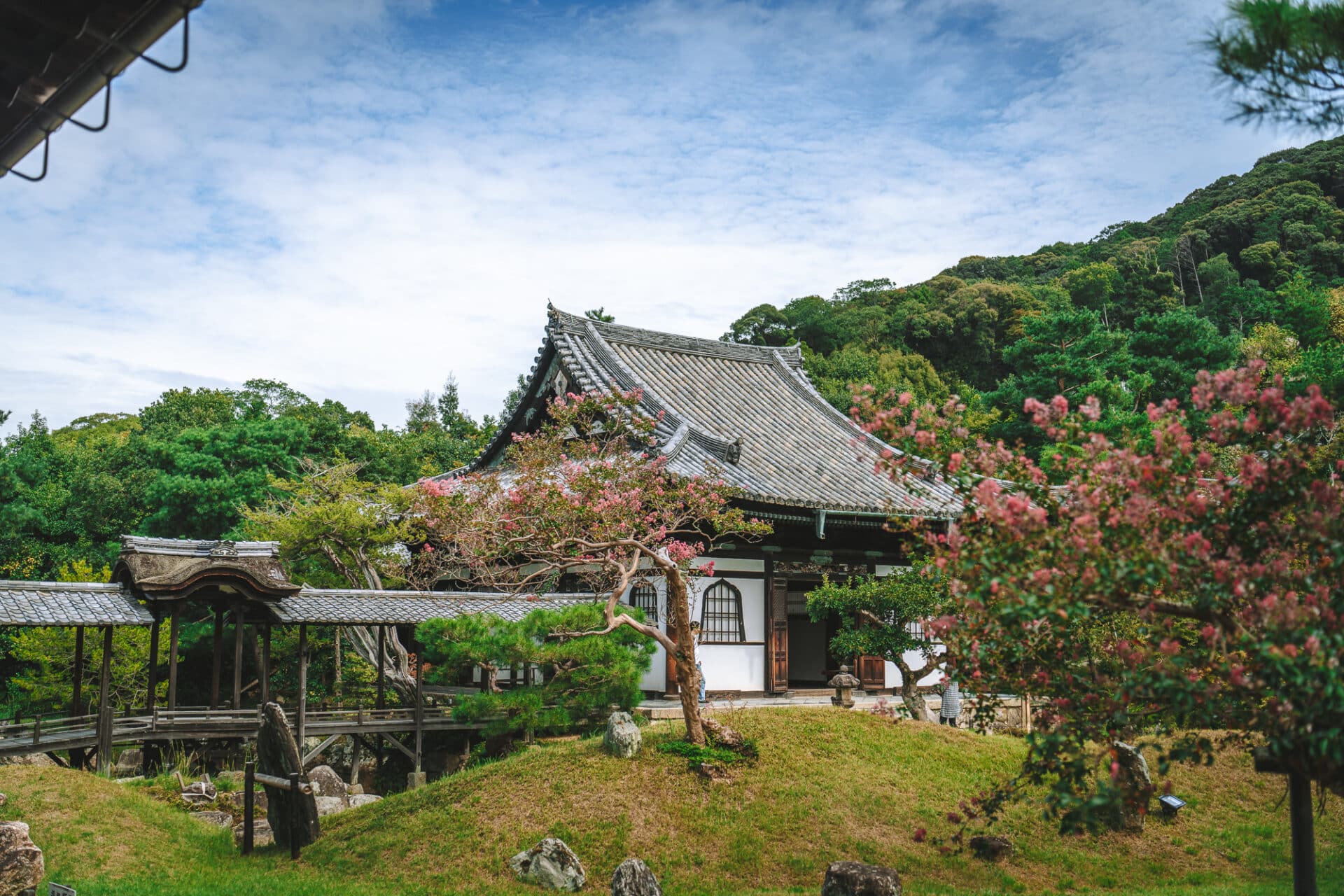 Gion Backyard, Kyoto, Japan
Gion Backyard, Kyoto, Japan
Fall
Many agree that Fall is the following finest time to go to Kyoto. The temperatures fall after September, and the rain subsides round October, making it a nice time to benefit from the outdoor.
Fall foliage is gorgeous round Kyoto and in addition tends to draw a justifiable share of crowds. The daytime temperatures are a extra comfy 70°F (21°C), with evening temps dropping to 55 F (12 C).
Winter
Winter will get chilly with freezing temperatures. However that signifies that it’s usually the quietest time to go to Kyoto. You’ll be able to count on to have loads of locations to your self and infrequently with a reasonably dusting of snow.
Daytime temperatures sit round 50°F (10°C), whereas at evening, they will drop to 32 °F (0 °C) in peak winter in January. You’ll need to pack heat clothes, particularly for those who plan on doing a strolling tour of the town.
2-Day Kyoto Itinerary
We’ve got to confess that whereas this itinerary does pack a punch, 2 days in Kyoto isn’t sufficient time. We spent 5 days within the metropolis, and it nonetheless felt fairly rushed as we coated lots of floor from morning till night.
Consider this Kyoto itinerary as a begin and take into account including a couple of days to it, if attainable. In case you can’t, be ready to stroll round 9-12 miles (15-20 km) day by day or fork out for a couple of taxis to get round rapidly.
Day 0: Arrive and verify into Seikoro Ryokan
Arrive in Kyoto and verify into Seikoro Ryokan. A ryokan is a standard Japanese inn the place you possibly can expertise genuine Japanese tradition. A keep in a ryokan is a should when visiting Kyoto, and Seikoro Ryokan is likely one of the finest, providing an incredible introduction to the town. Overlook a couple of typical lodge room. This keep is all about slippers, yukata robes, inexperienced tea, onsens (scorching springs), and kaiseki delicacies.
Seikoro Ryokan was established in 1831 and is an unpretentious 4-star boutique ryokan close to the Kamo River in central Kyoto. Constructed-in conventional type with wooden panels, display screen doorways, a leafy courtyard, a panorama rock backyard, chabudai eating tables, and an onsen with synthetic scorching spring water, this ryokan presents wonderful service and is assured to be a spotlight of your keep.
That night, don your yukata gown and dive straight into conventional Japanese tradition with a kaiseki dinner included in your keep. The meal might be served within the privateness of your personal room, so it’s an incredible enjoyable exercise to e book in your arrival day. Get pleasure from a standard multi-course meal with a number of appetizers and small dishes showcasing Japanese delicacies, together with loads of seafood.
After dinner, chill out on the on-site onsen. You’ll be able to soak within the excellent temperature of the massive wooded bathtub to chill out and prepare for some sightseeing the next day.
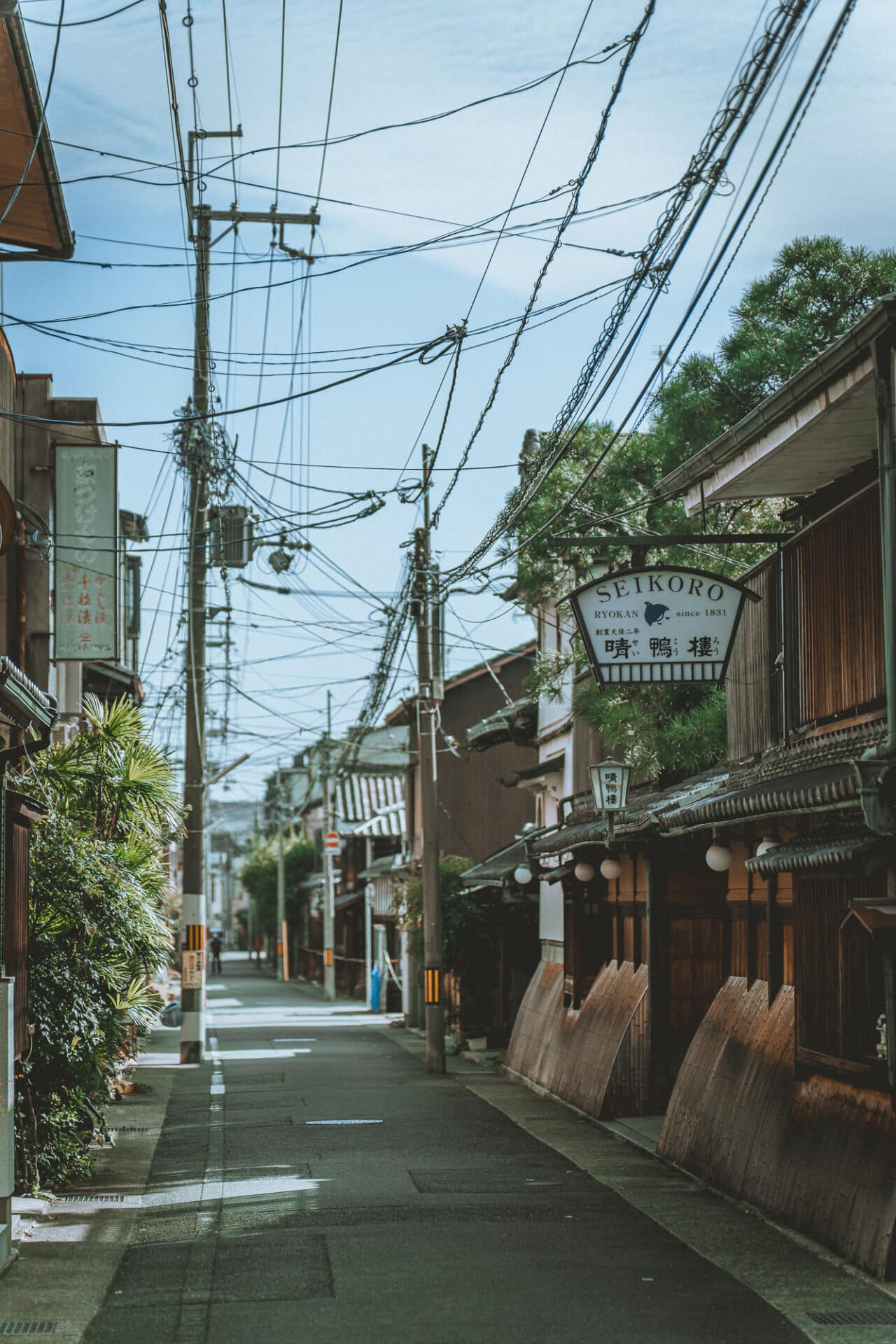
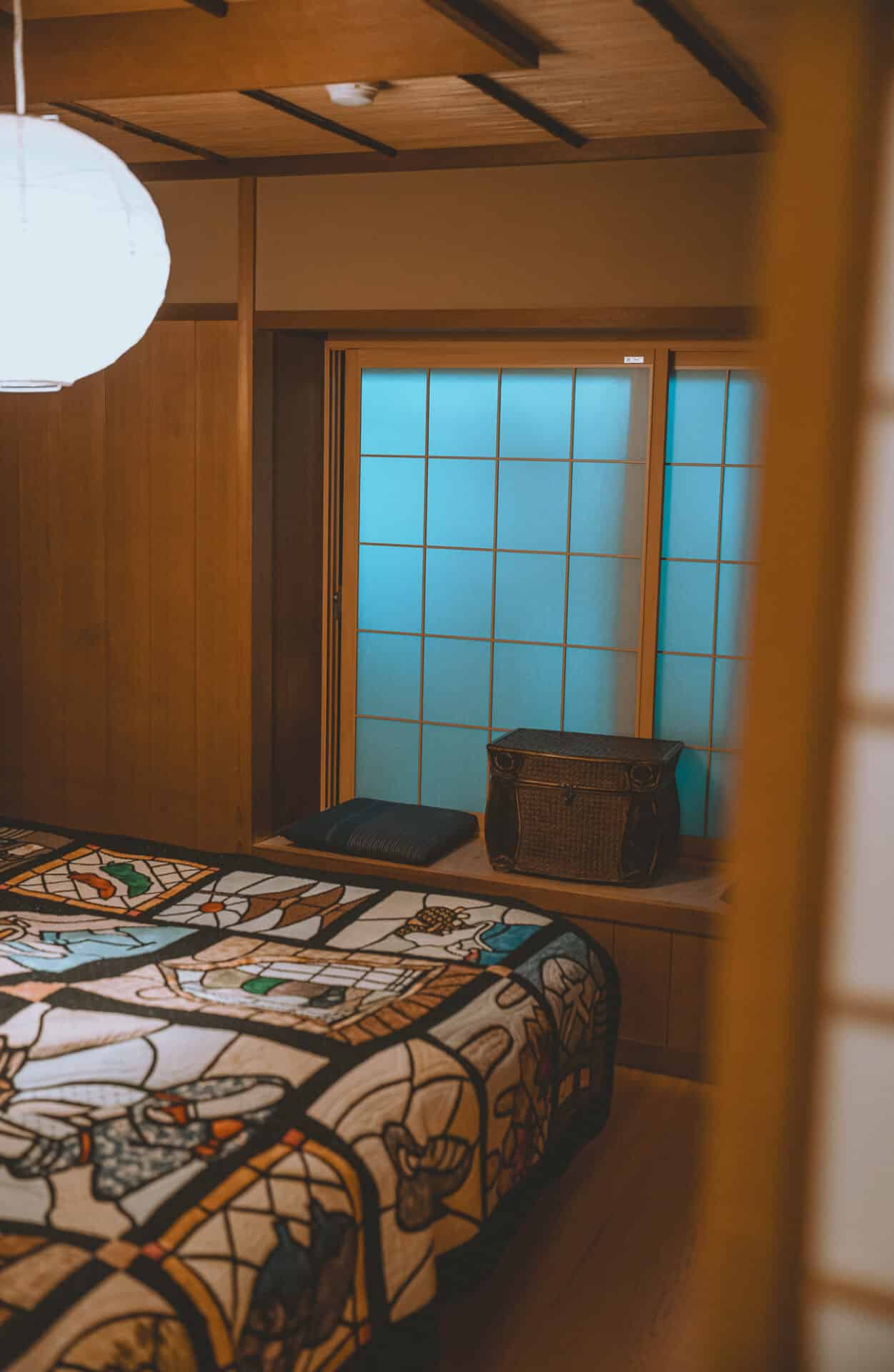
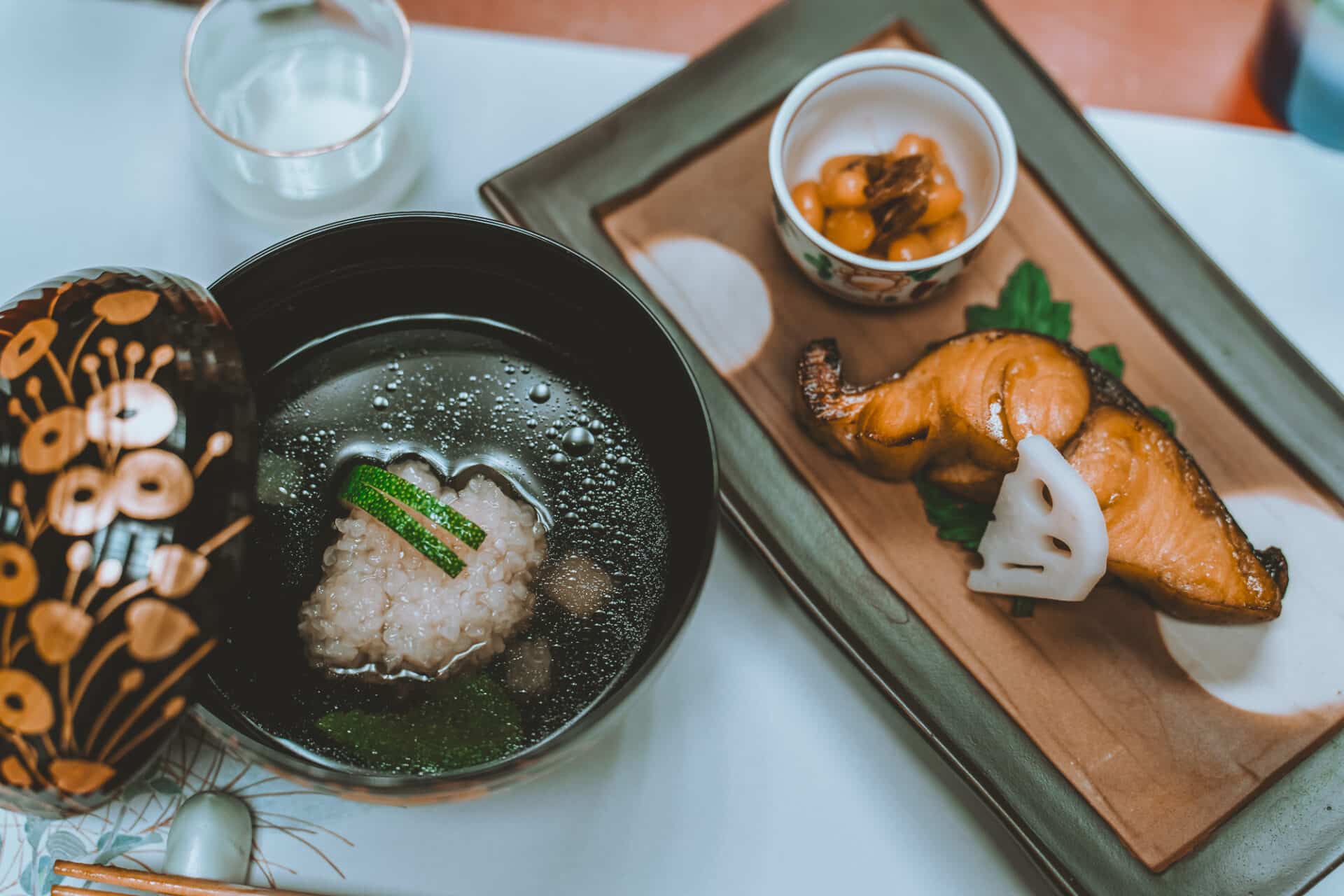
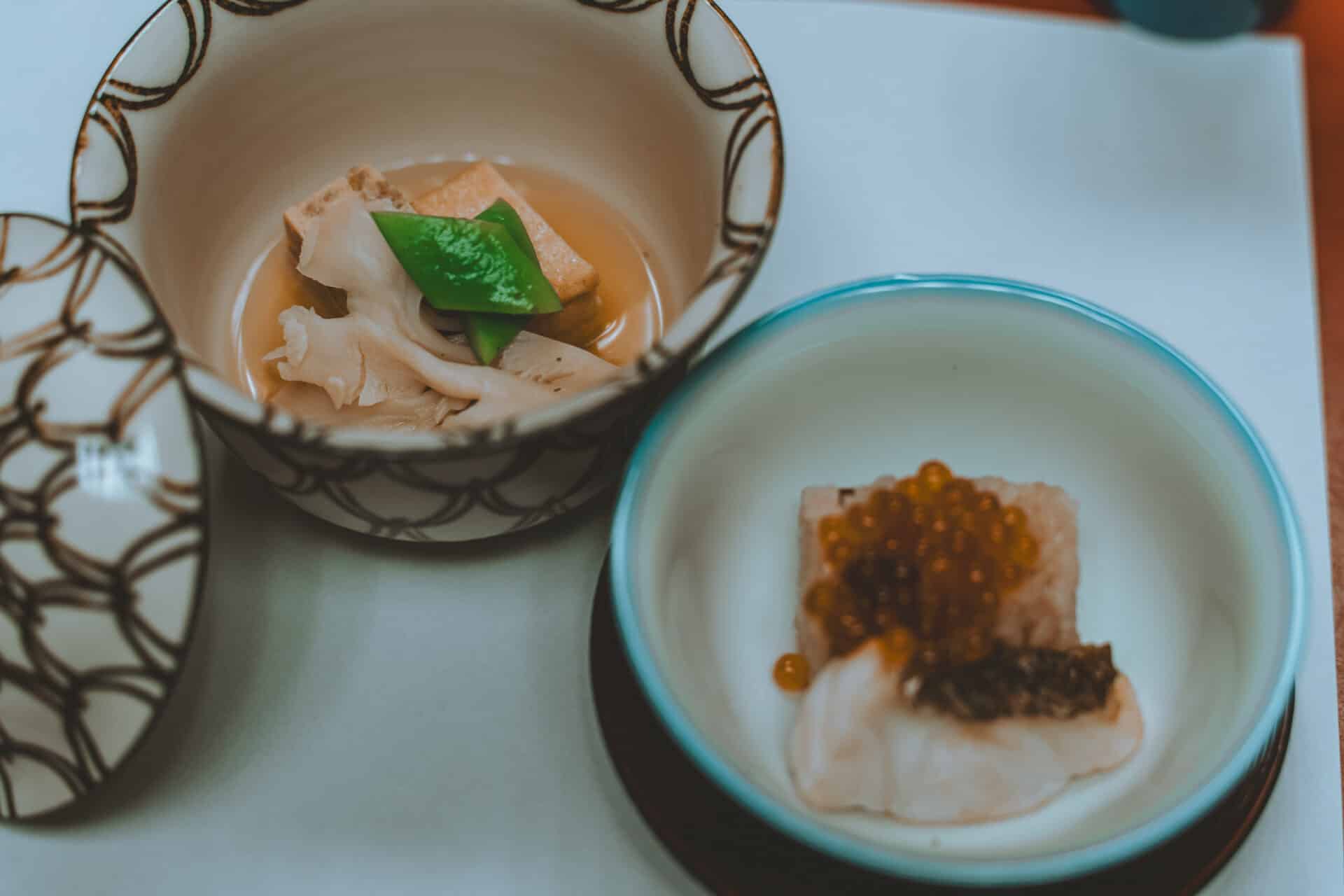
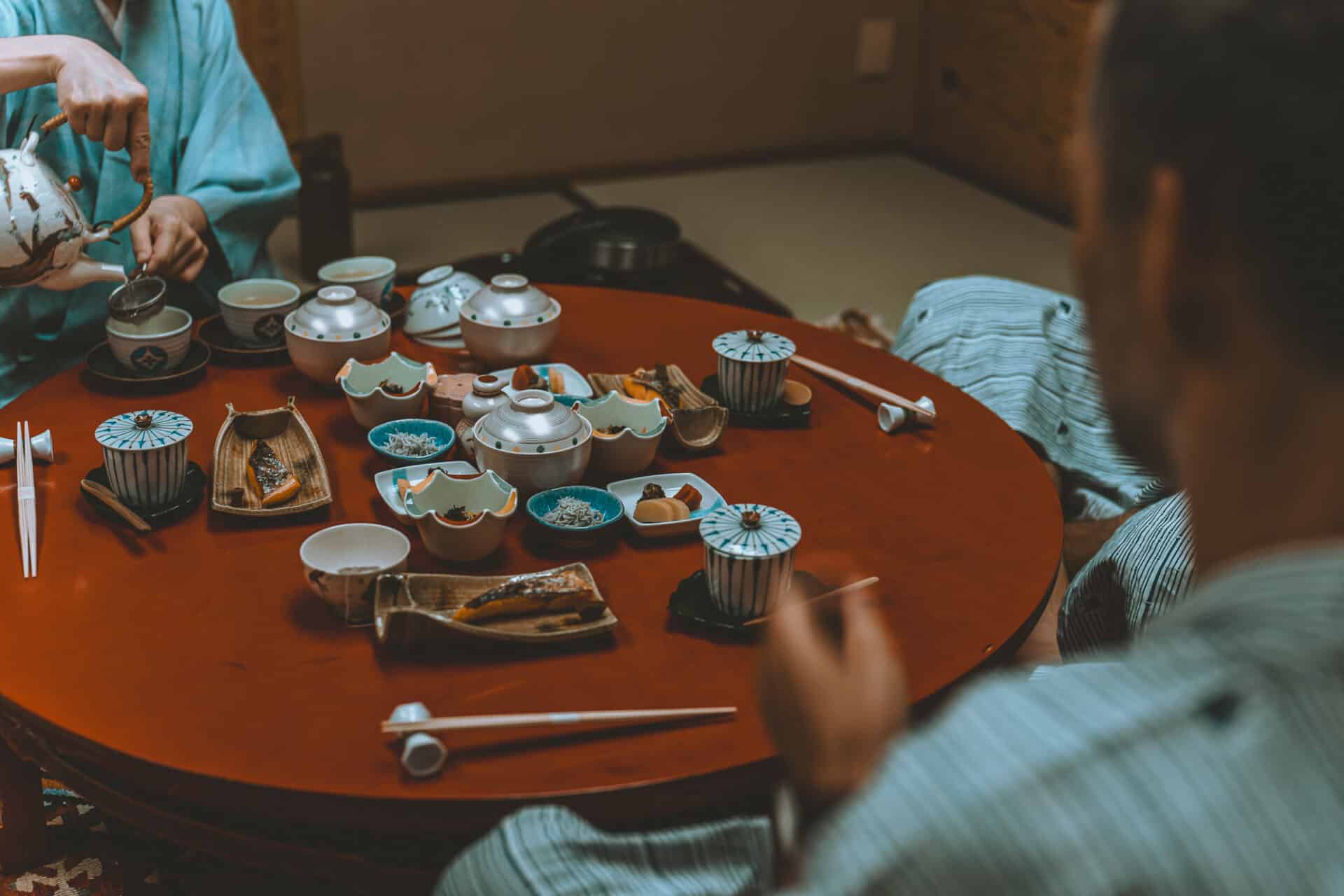 Kaiseki meal at Seikoro Ryokan
Kaiseki meal at Seikoro Ryokan
Day 1: Temples, Teahouses, and Geishas
Begin your day with breakfast at Seikoro Ryokan (additionally included in your keep). Select between a standard Japanese or extra Western-style breakfast and gas up for the day forward.
Morning: Discover Higashiyama District
Situated on the jap facet of the town, Higashiyama District is likely one of the best-preserved historic districts of Kyoto, taking you again to the feudal period with conventional Japanese structure. Crammed with slender streets, picket buildings, conventional pottery outlets, tea homes, and loads of temples and shrines, it’s the right place to expertise outdated Kyoto.
Mornings are usually much less busy, so head there shortly after breakfast to beat the mid-day crowds. Discover the slender alleyways, particularly between Kiyomizudera and Yasaka Shrine, popping into conventional service provider outlets promoting native crafts and souvenirs.
Then, go to among the well-known temples and shrines within the district. We advocate trying out:
- Kodai-ji Temple: This serene Buddhist temple, Kodai-ji, was constructed in 1605 in reminiscence of Toyotomi Hideyoshi. The temple grounds function temple halls, panorama gardens, teahouses and a bamboo grove.
- Yasaka Shrine: Well-known for its hanging lanterns, this shrine hosts the well-known Gion Matsuri Festival held yearly in July. It’s situated subsequent to Maruyama Park, which is the most well-liked park within the metropolis for cherry blossoms.
- Kiyomizu-dera Temple: One among Japan’s hottest Buddhist temples might be busy any time of the day, so be ready to courageous the crowds. Sitting perched on Mount Otowa east of the town, it options scenic views from its balcony over the town.
There are many eating places within the space to seize lunch and provides your ft a break.
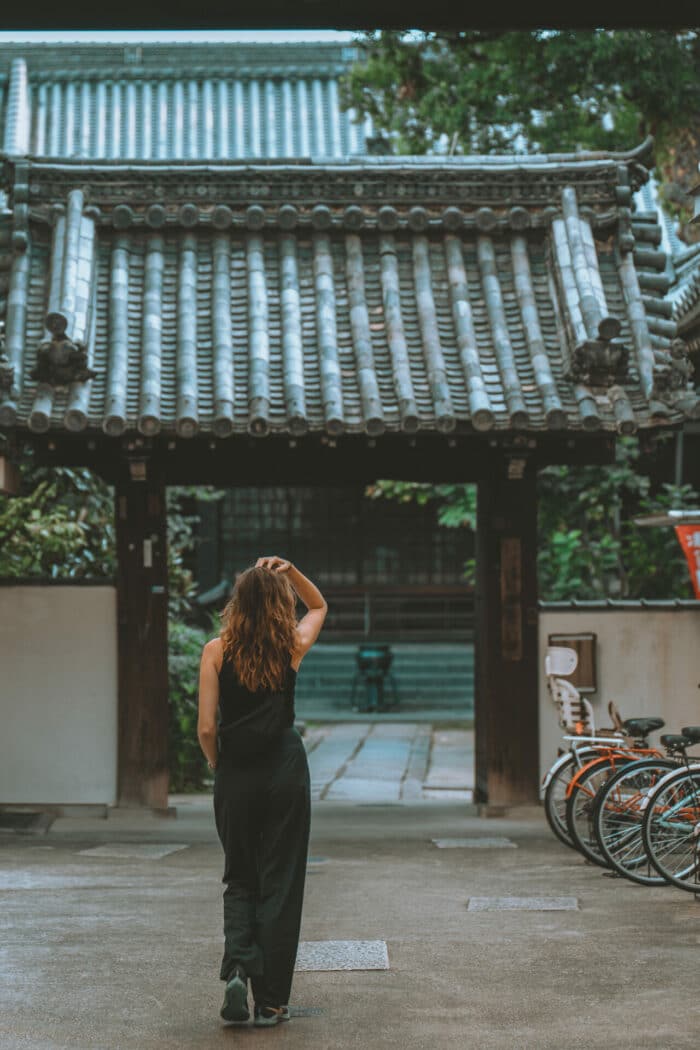
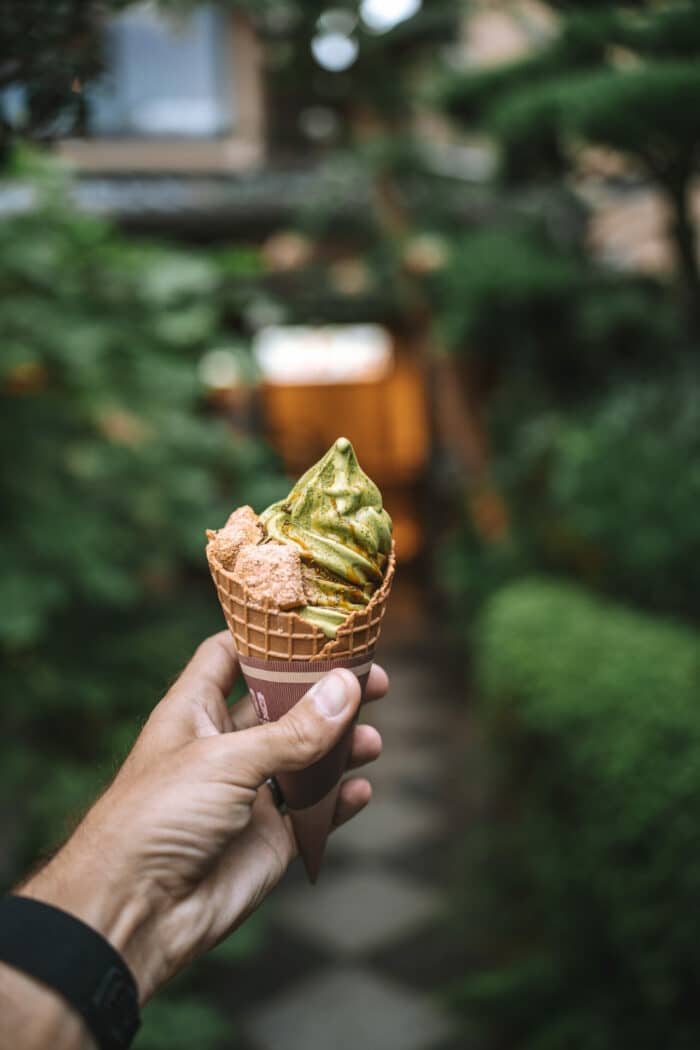
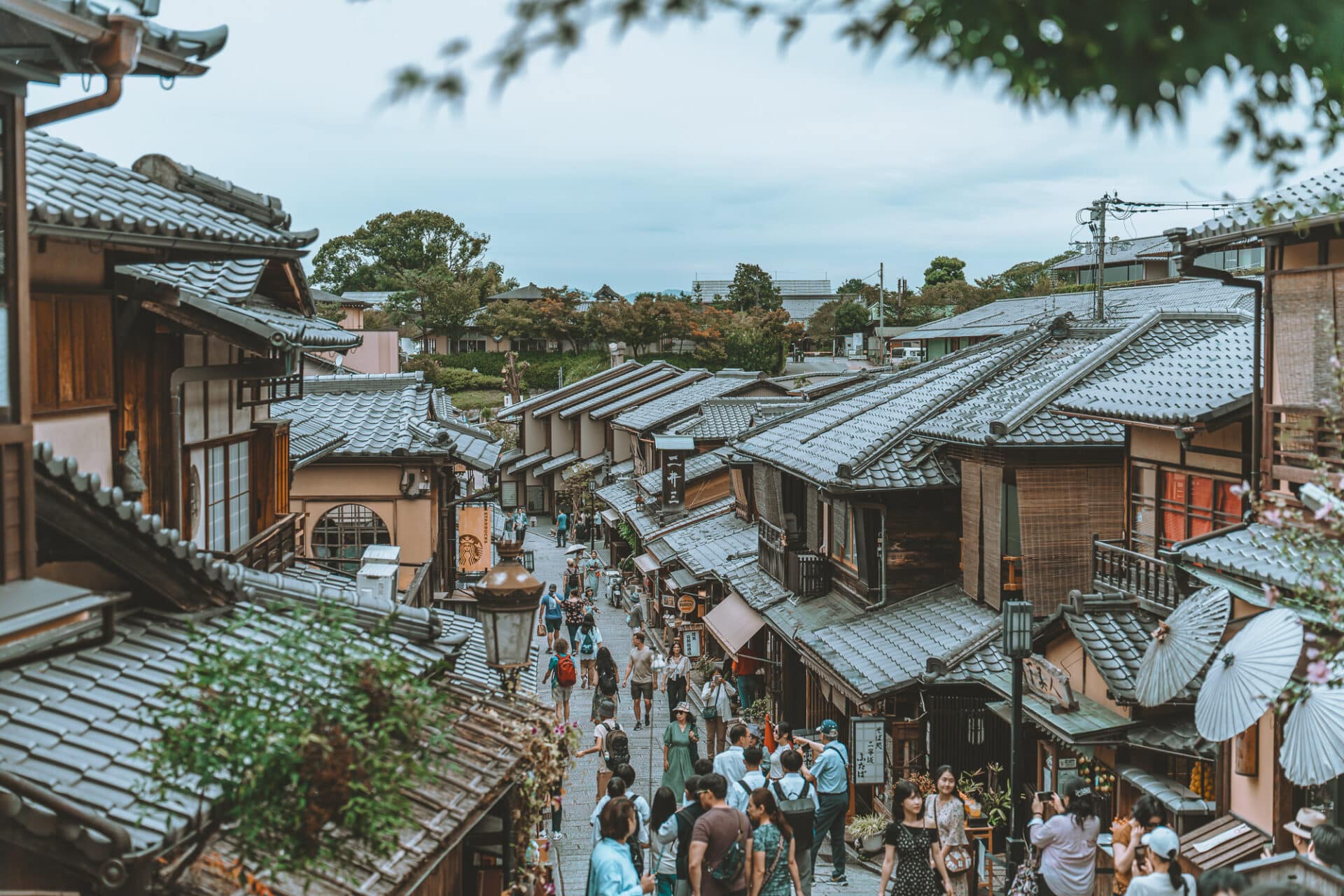 Higashiyama space in Kyoto
Higashiyama space in Kyoto
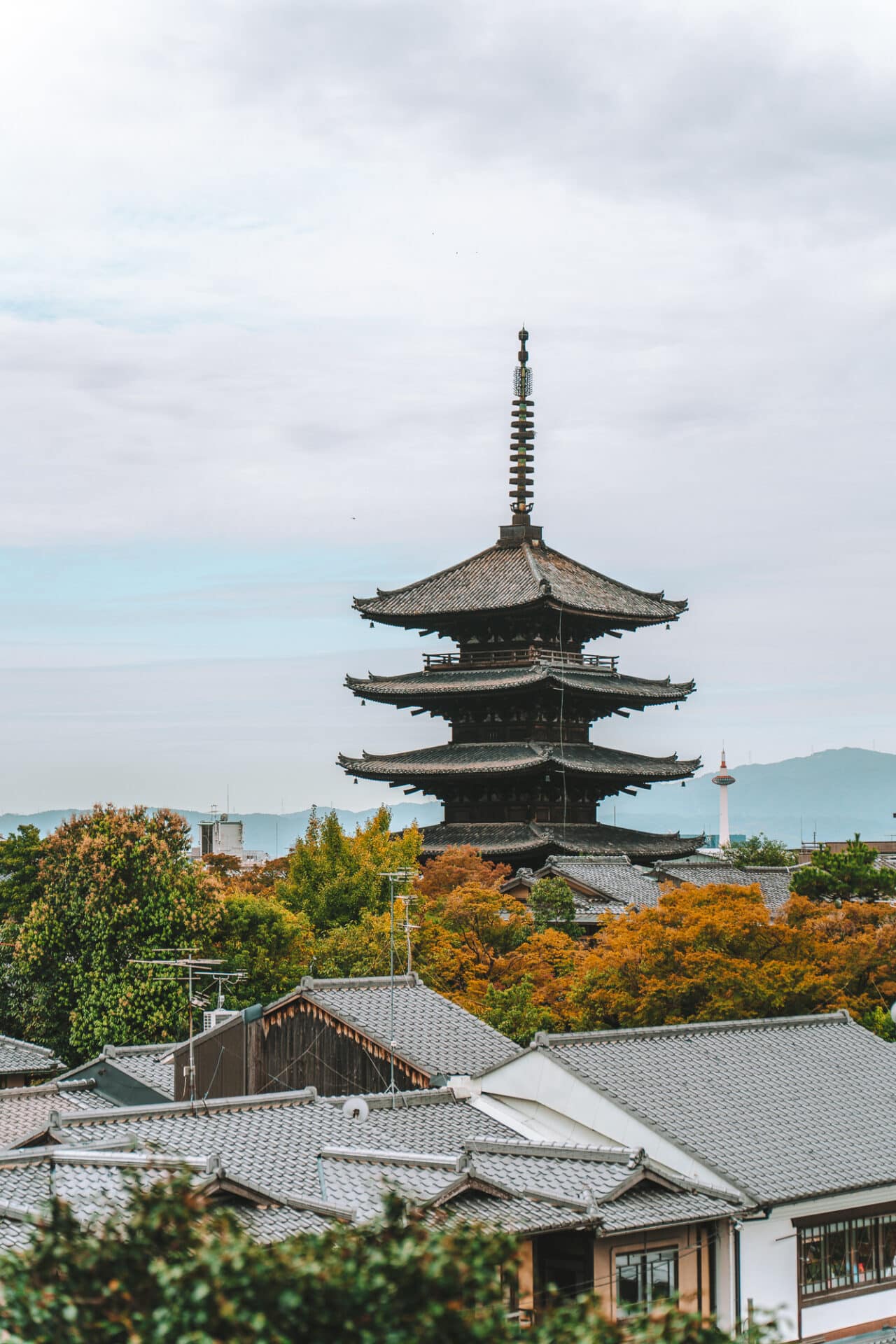
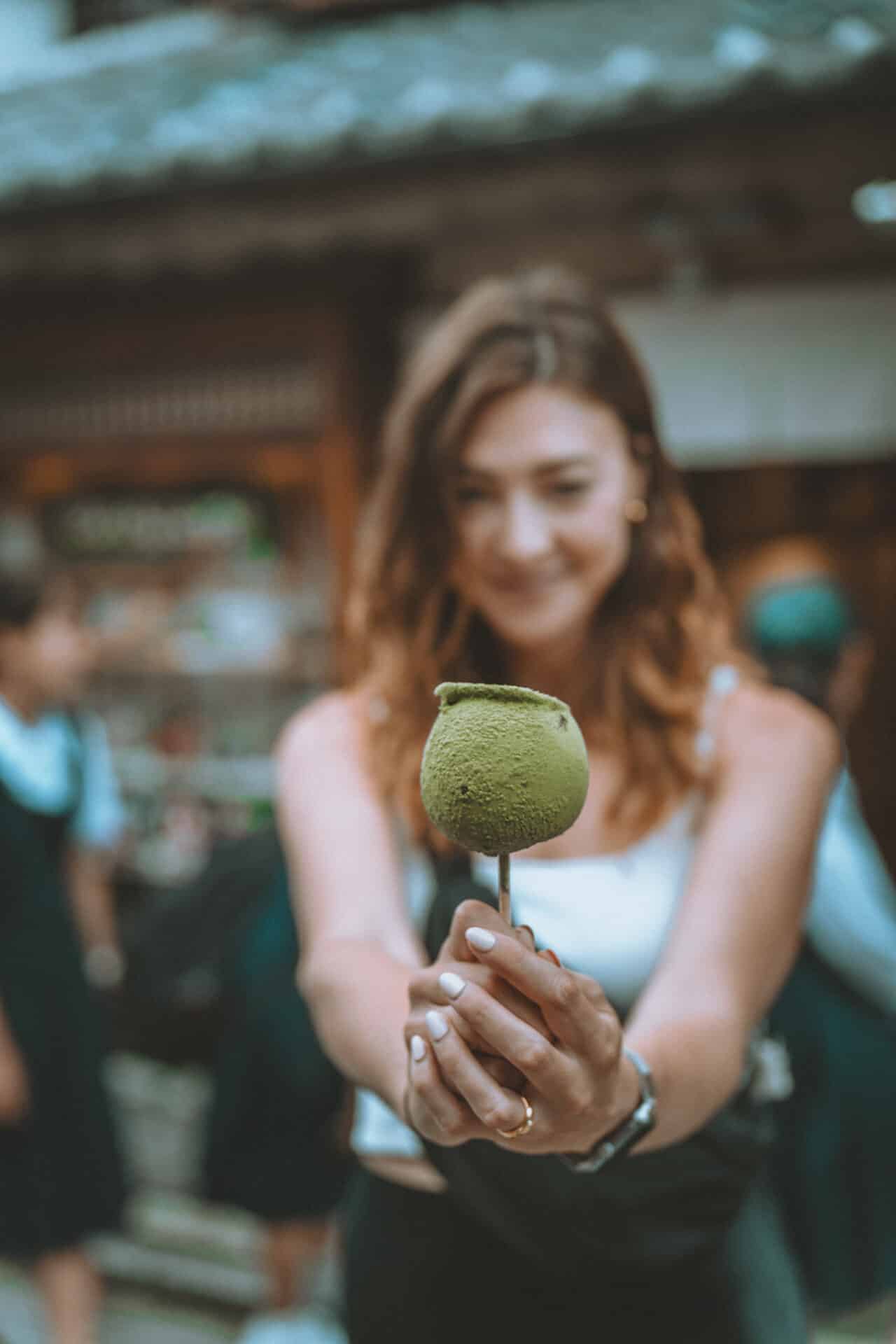
Afternoon: Discover Gion District
As Kyoto’s most well-known geisha district, Gion is a must-visit on any Kyoto itinerary. Situated between Yasaka Shrine and Kamo River, this space is full of outlets, eating places and teahouses, the place geiko (native dialect for geisha) and maiko (geiko apprentices) entertain throughout a standard tea ceremony.
The primary avenue of Gion is Hanami-koji Avenue, which runs from Shijo Avenue to Kenninji Temple. This avenue is full of well-preserved machiya homes, which now perform as eating places, serving Kyoto-style kaiseki ryori (conventional Japanese delicacies) and different sorts of native and worldwide meals. Stroll by way of the realm at sundown and see for those who can catch a glimpse of a geisha within the streets.
If dinner with geisha leisure is in your bucket listing, make sure to e book prematurely. “Dinner and a Present” packages begin at $100/particular person.
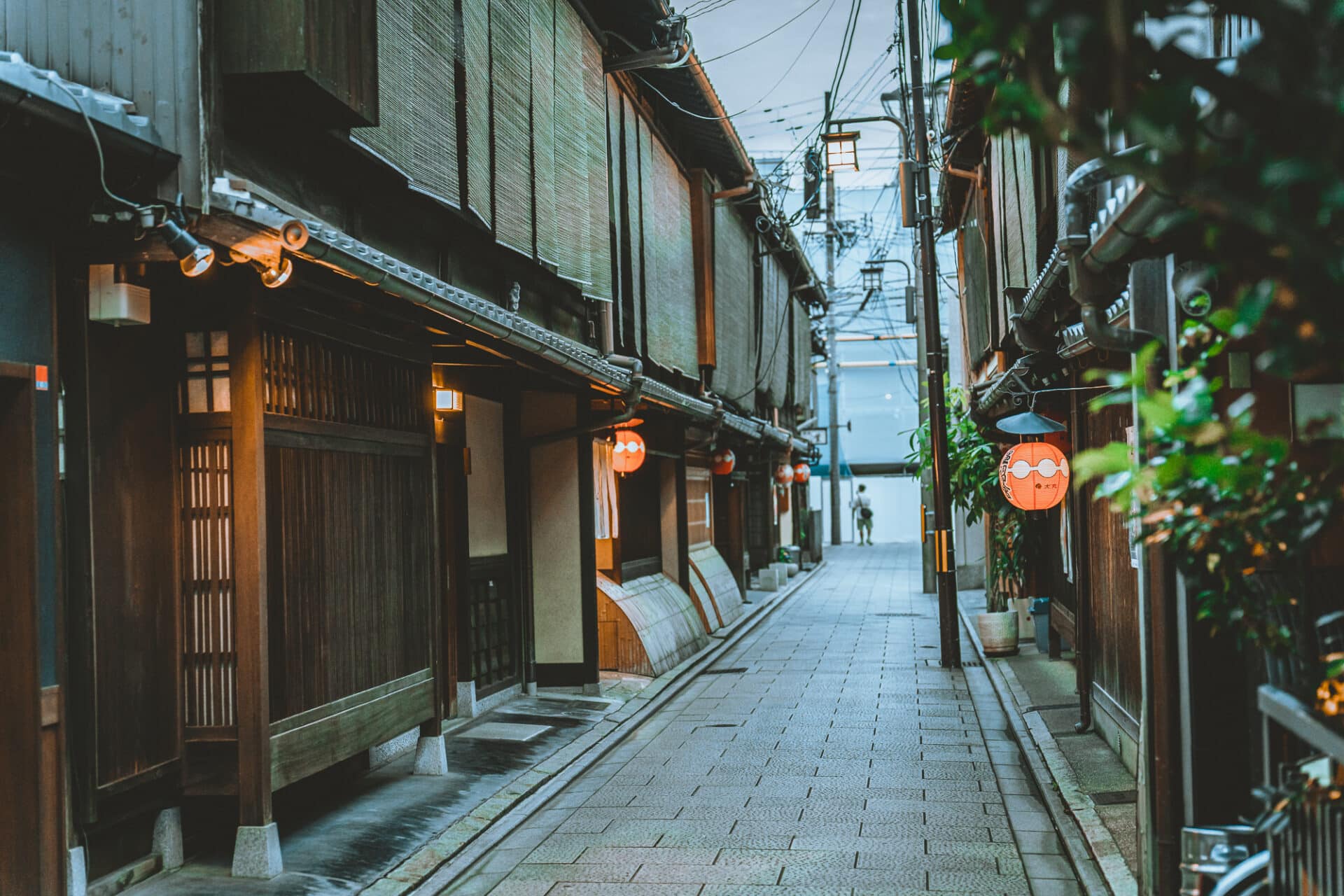 Gion district, Kyoto
Gion district, Kyoto
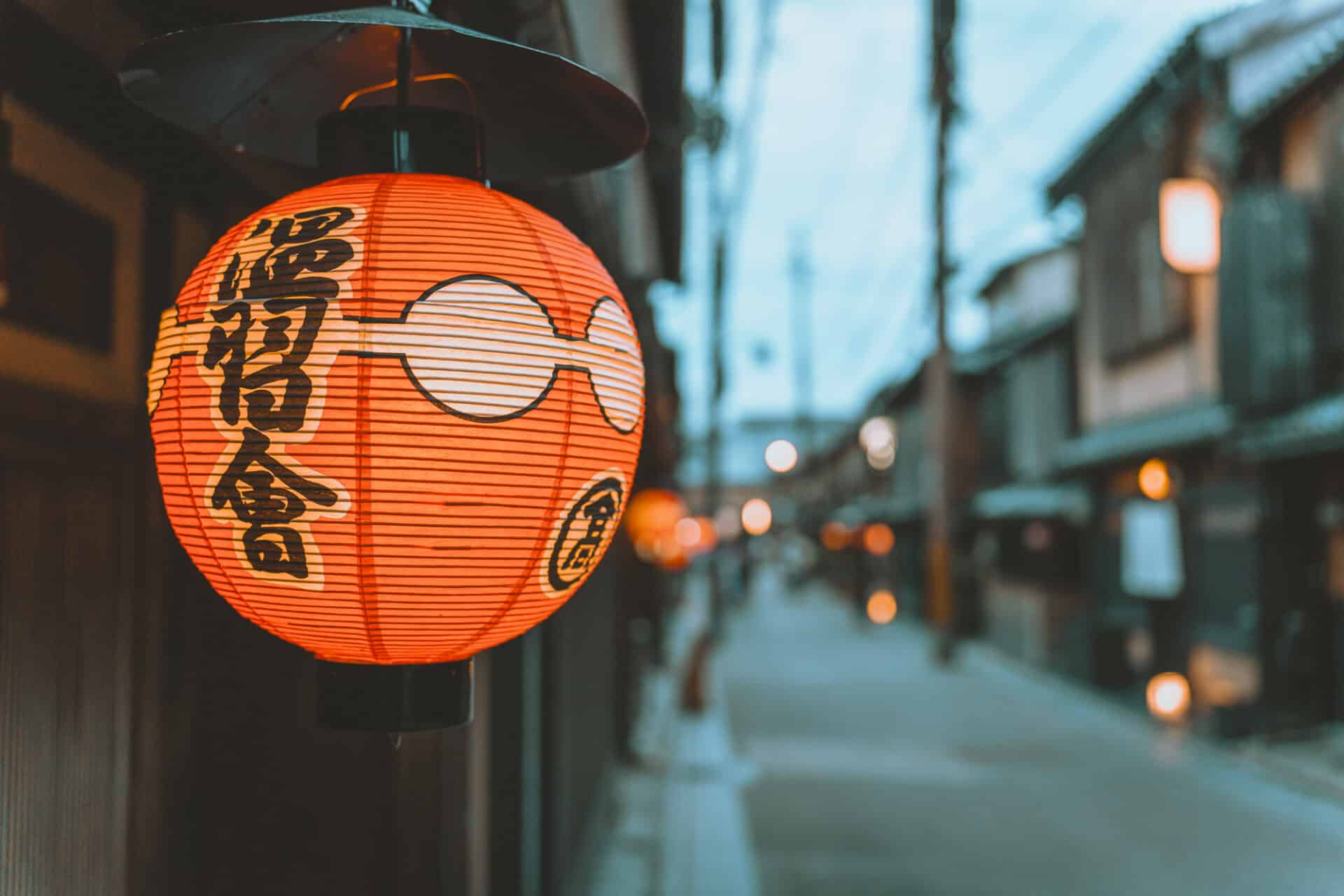
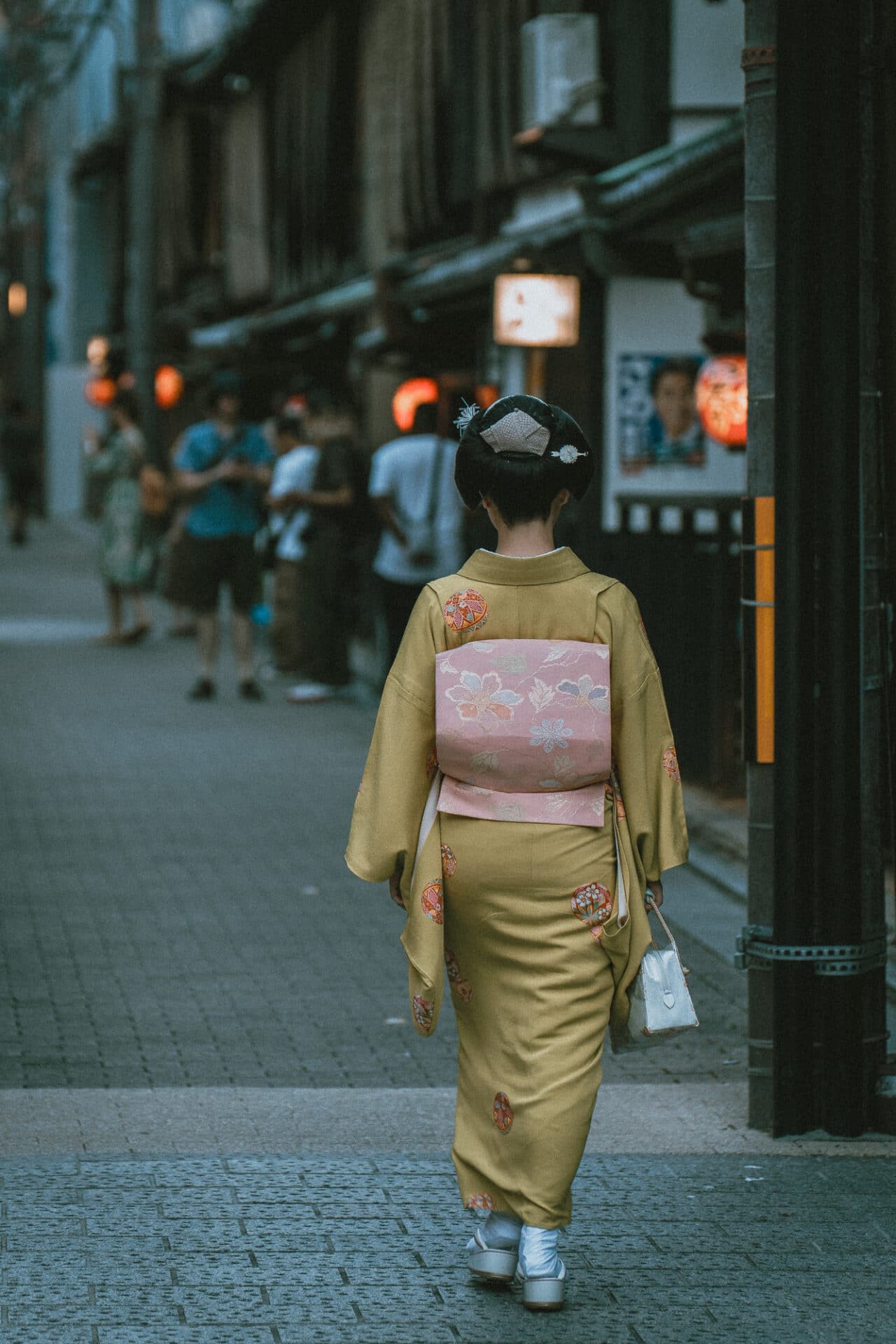
Night: Downtown Kyoto
Alternatively, head throughout to the west facet of the river to Pontocho Alley, which runs parallel to the river. This atmospheric avenue is lined with conventional outlets and eating places, making for a really conventional Japanese expertise.
Pontocho Alley involves life at evening with dozens of small eating places opening their doorways for dinner service solely. You’ll be able to choose from quite a few dinner choices, together with Yasubee for okonomiyaki, Ukiya for soba noodles, or Yamafuku for a standard tatami room and scorching pot, to call a couple of.
Day 2: Palaces, Bamboo Grove and Views
Rise up early and head to Nishiki Marketplace for breakfast. This 400-year-old iconic market in downtown Kyoto is likely one of the highlights of any Kyoto journey.
The market is a slender strip lined with over 100 outlets and stalls specializing in all issues associated to meals and native produce.
You’ll be able to attempt Kyoto specialties, similar to Japanese sweets, pickles, contemporary seafood and sushi. Seize snack-size bites from quite a lot of meals stalls and gas your self for one more huge day of your Kyoto Itinerary.
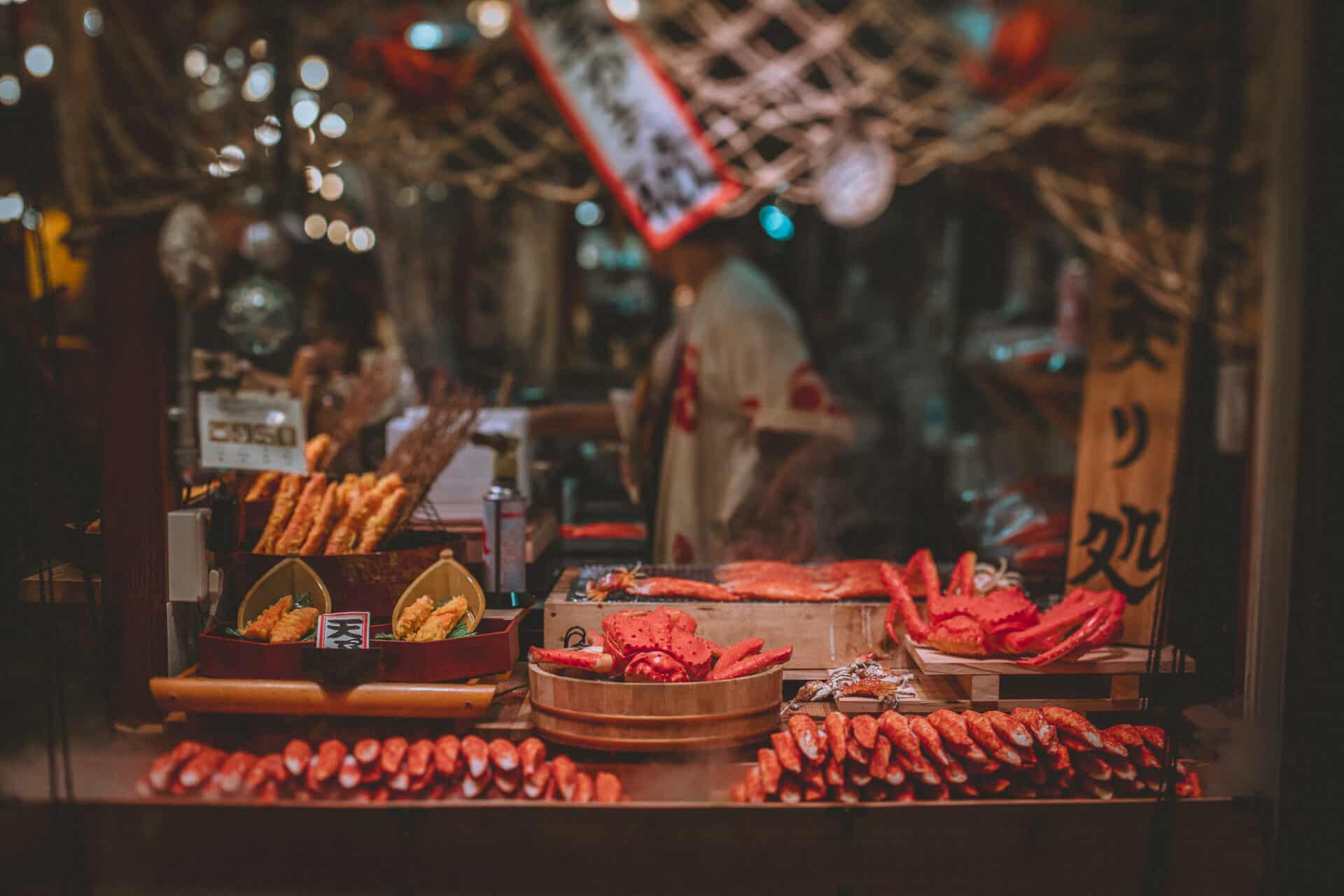 Crab meat stall at Nishiki Market
Crab meat stall at Nishiki Market
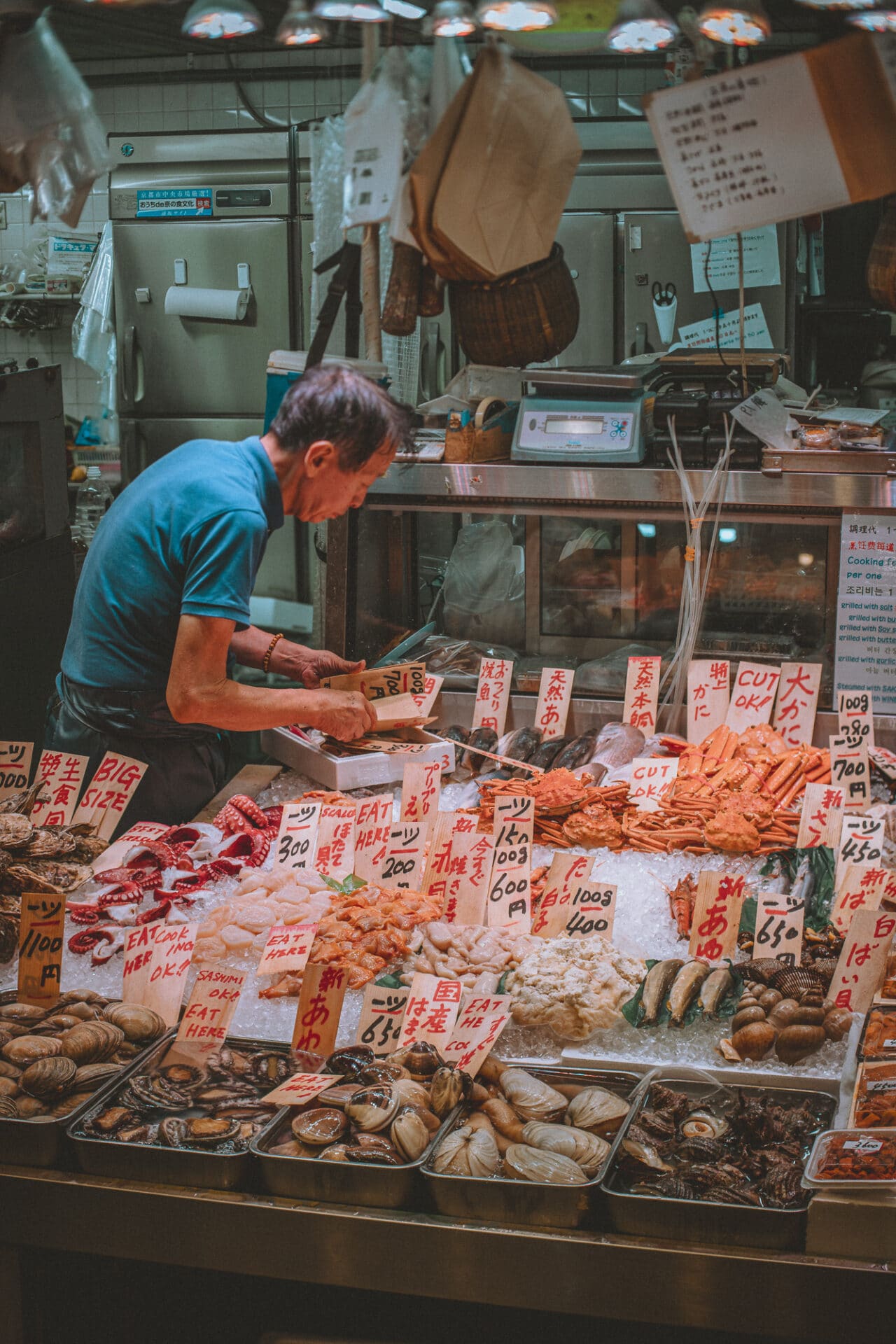
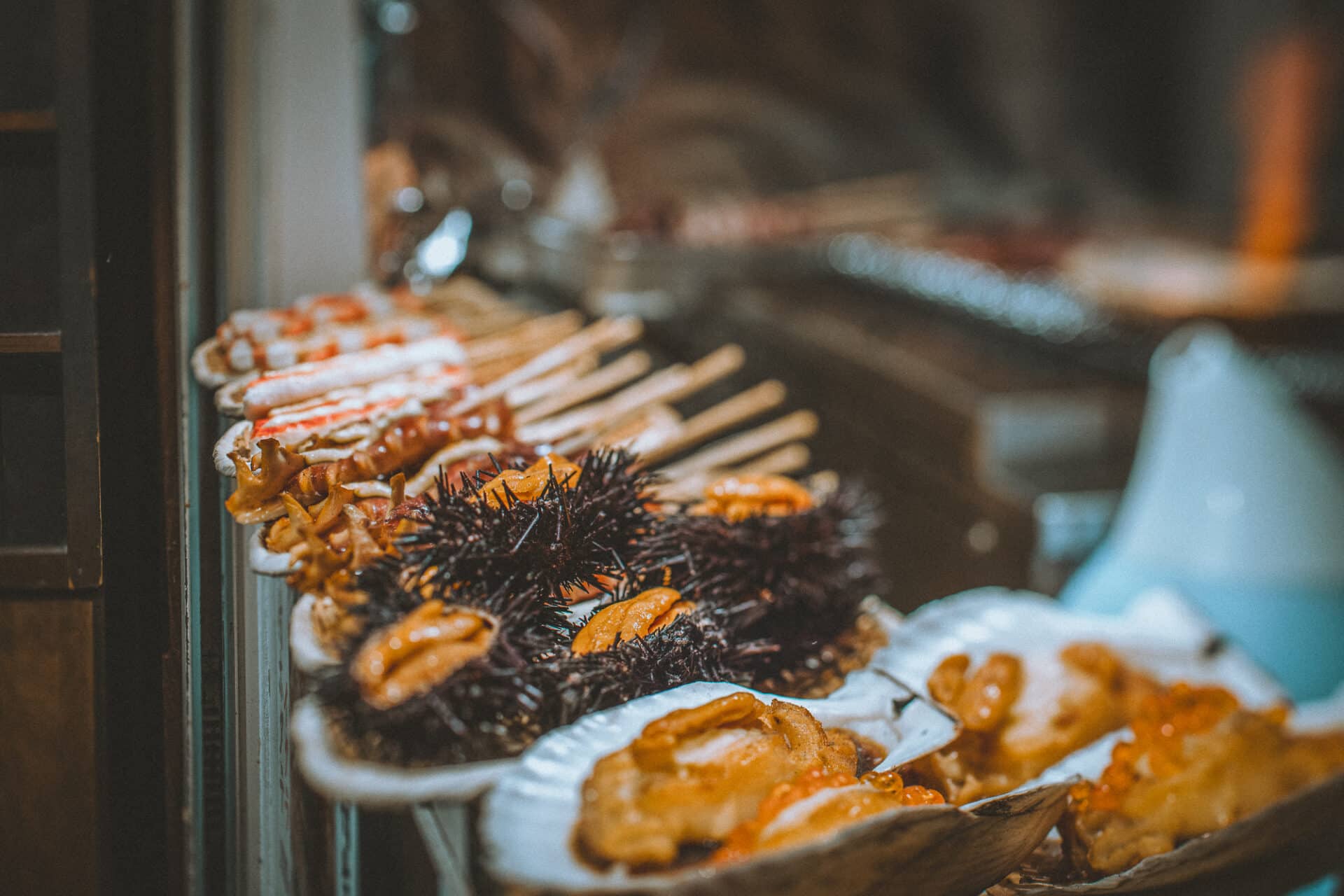
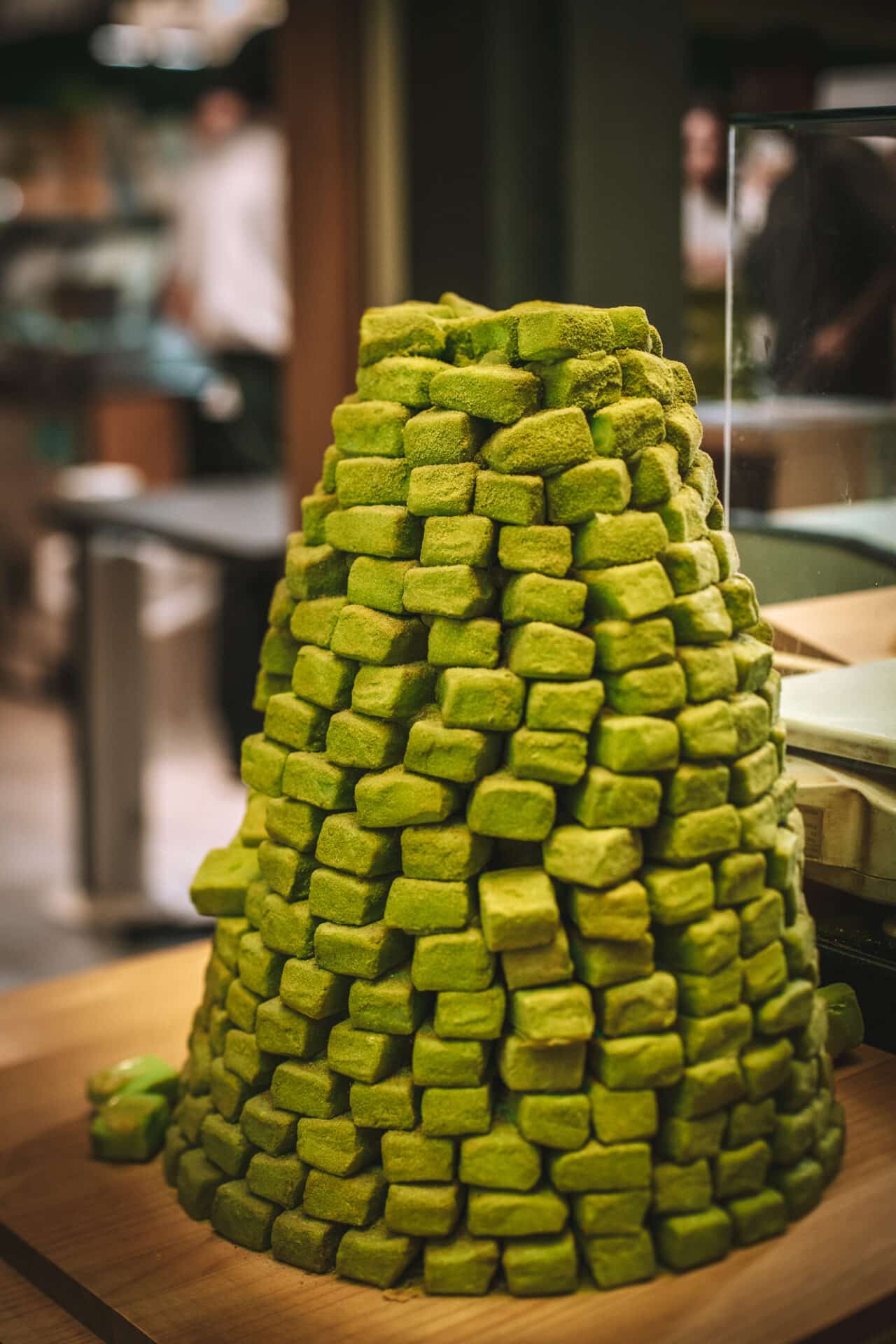
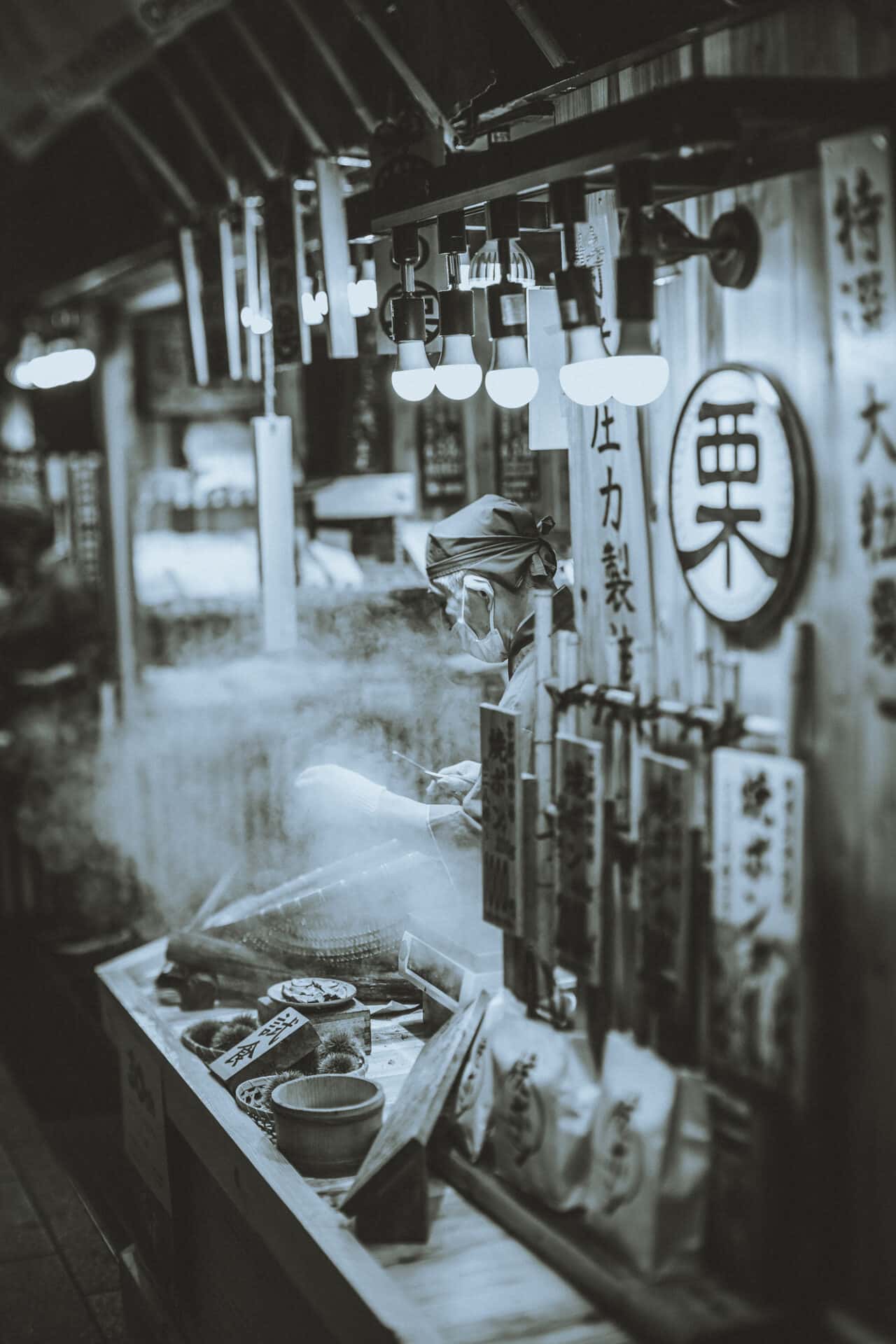
Morning: Shrines and Palaces
Kyoto Imperial Palace
Stroll, cycle, and seize a taxi or a subway to achieve the Kyoto Imperial Palace. Earlier than the capital was moved from Kyoto to Tokyo, this was the residence of the imperial household till 1868. Situated contained in the huge Imperial Park, the complicated is enclosed by lengthy partitions and consists of a number of gates, halls and gardens.
You’ll be able to go to the palace grounds both independently or on common English excursions. The grounds are huge and exquisite, however just a few of the rooms are open to the general public.
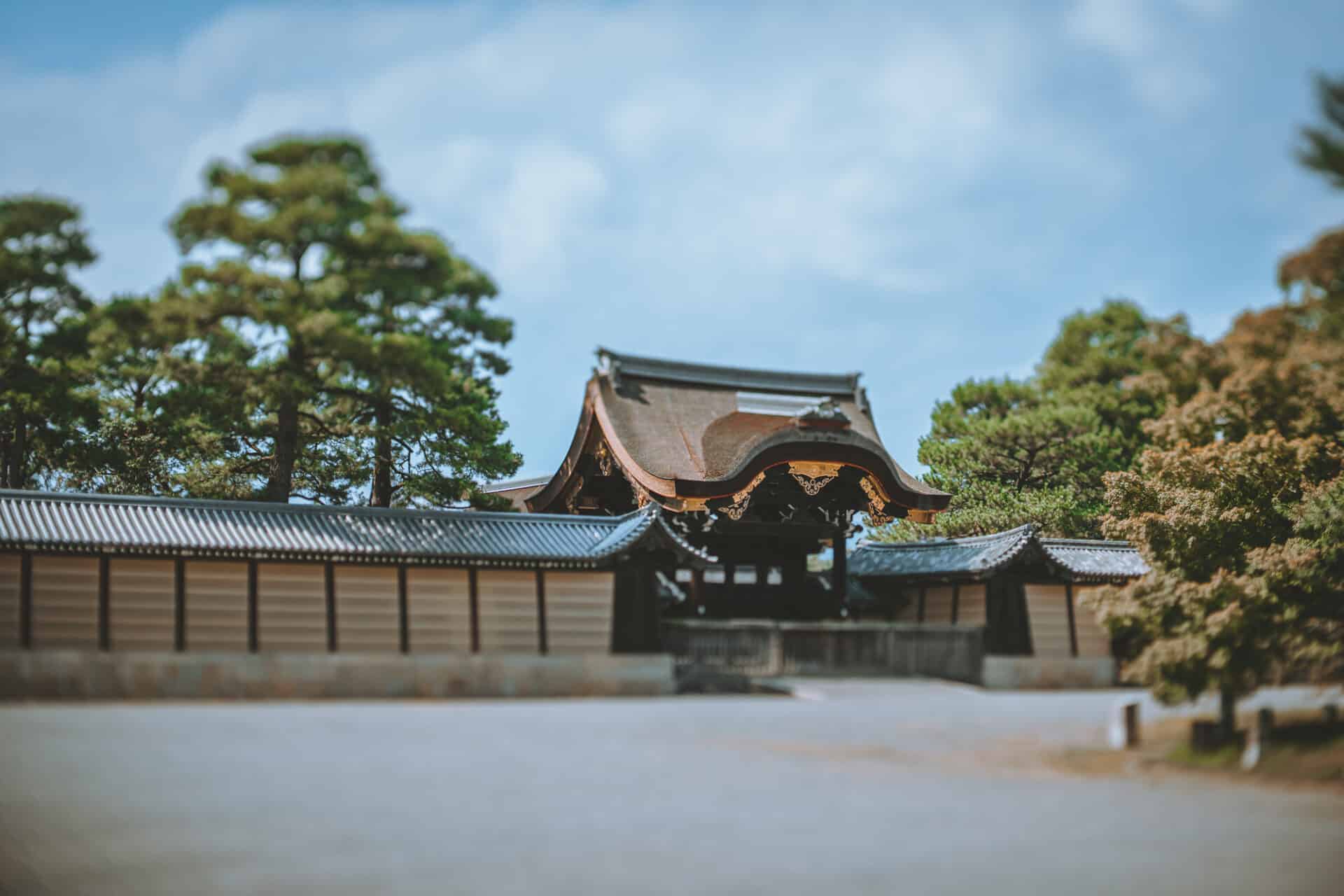 Kyoto Imperial Palace
Kyoto Imperial Palace
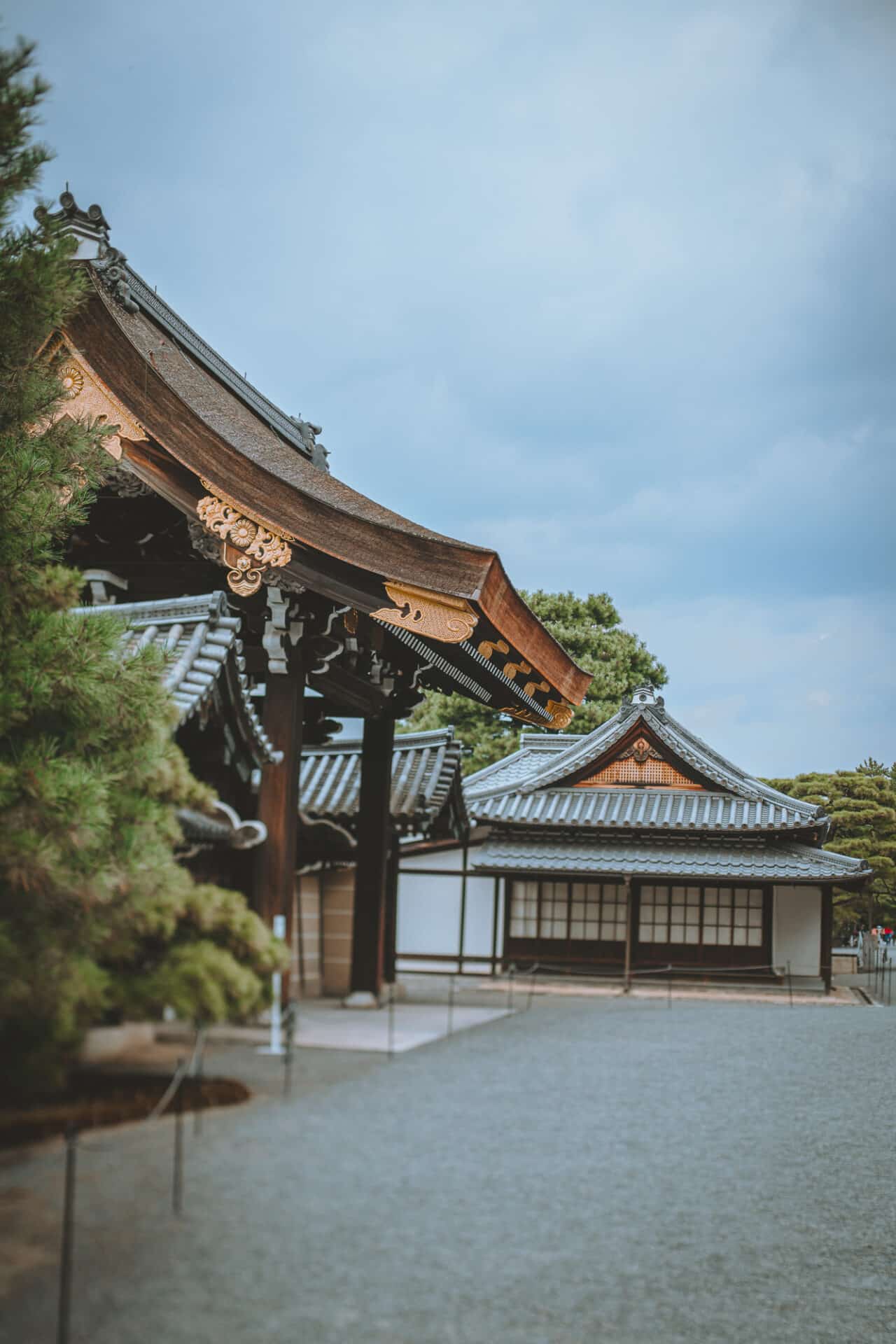
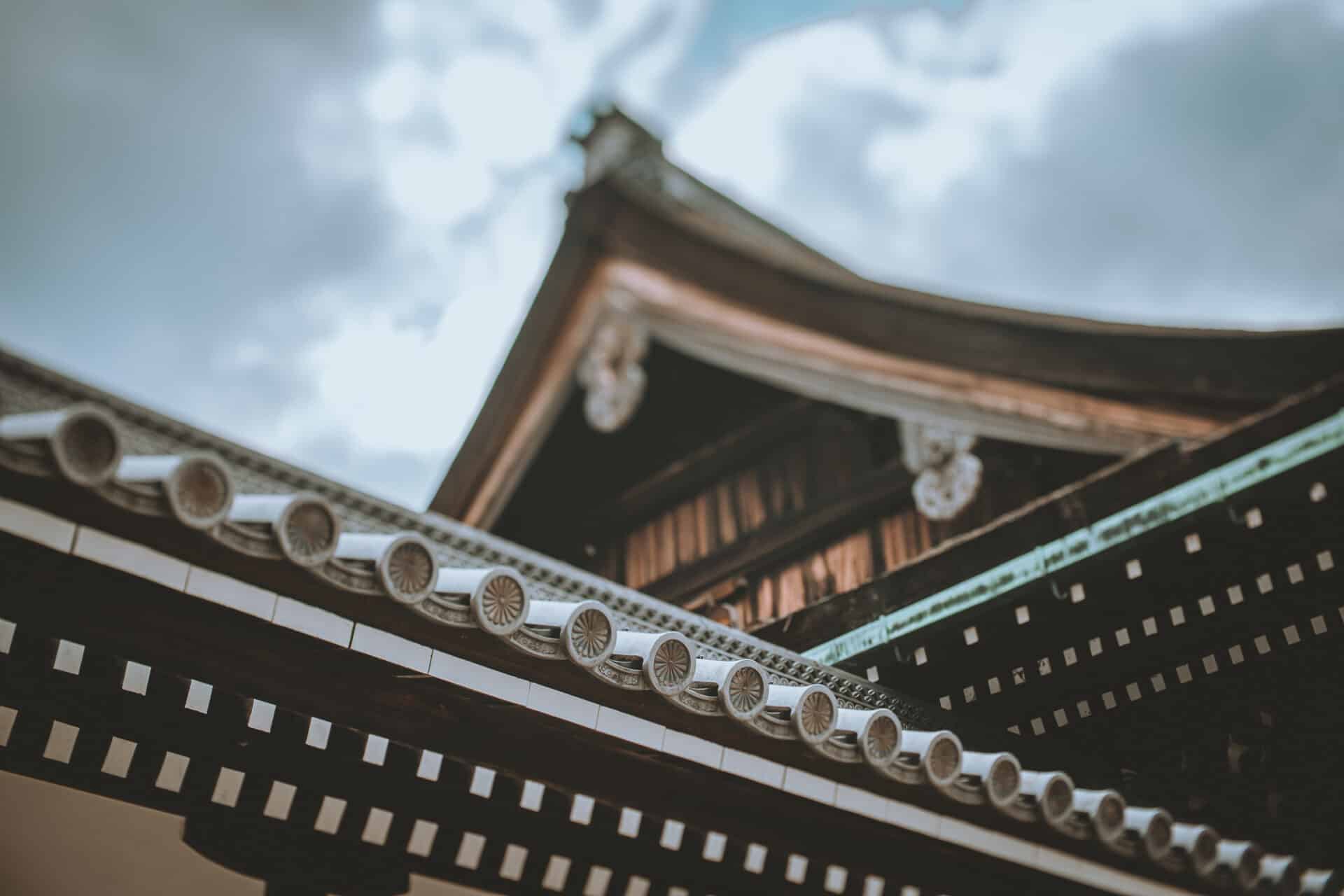
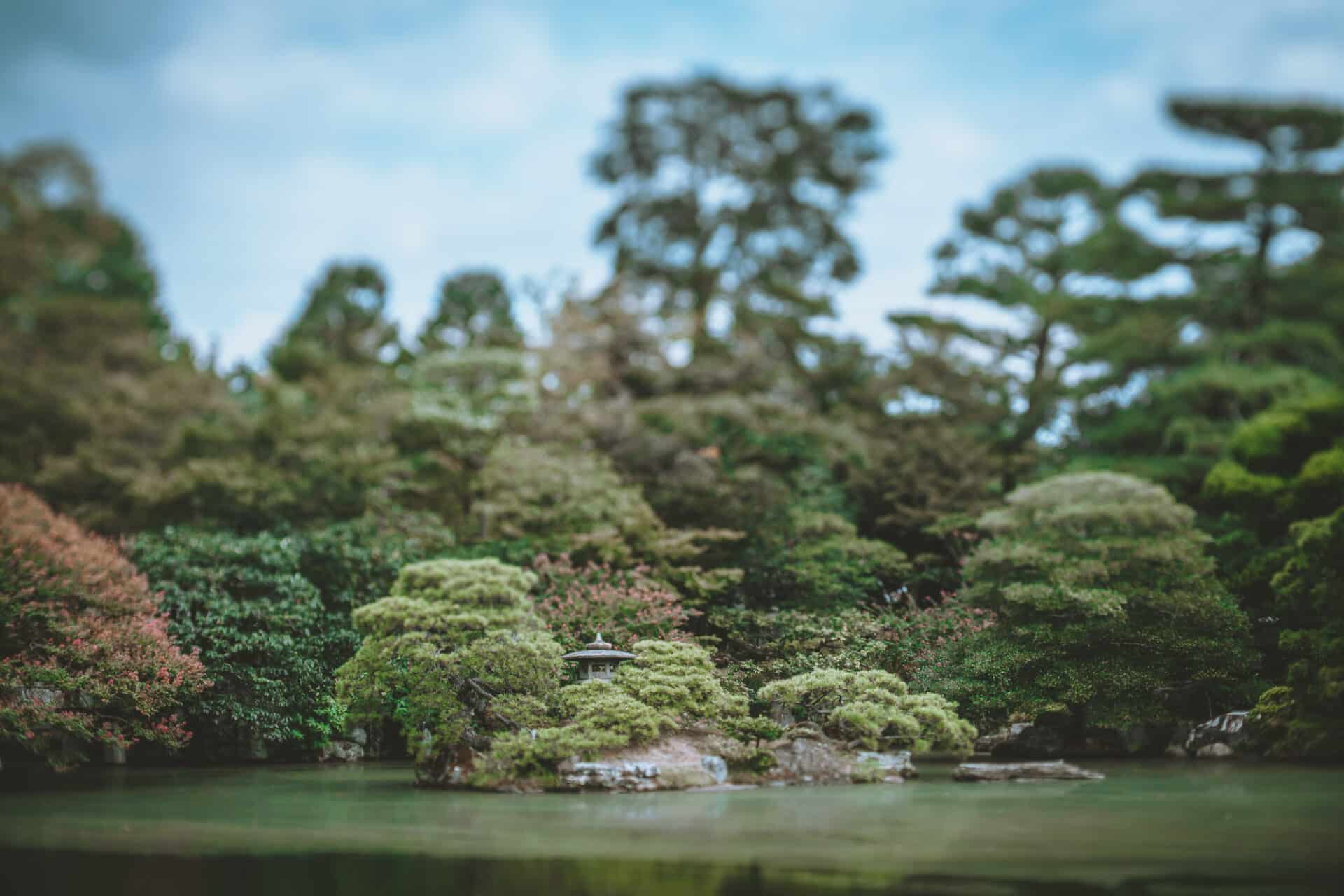 Gardens at Kyoto Imperial Palace
Gardens at Kyoto Imperial Palace
Kinkaku-ji Temple
Head northwest of the palace gardens to Kinkaku-ji Temple, also called the Golden Pavilion. This Zen Buddhist temple is totally coated in gold leaf and overlooks a big pond and manicured gardens. Kinkakuji impressed the equally named Ginkakuji (Silver Pavilion), which will be present in Higashiyama district.
It’s burnt down quite a few occasions all through Japanese historical past and rebuilt, with the current golden temple complicated relationship again to 1955. Take the time to discover the temple grounds, together with the pinnacle priest’s former dwelling quarters (hojo) and the Sekkatei Teahouse.
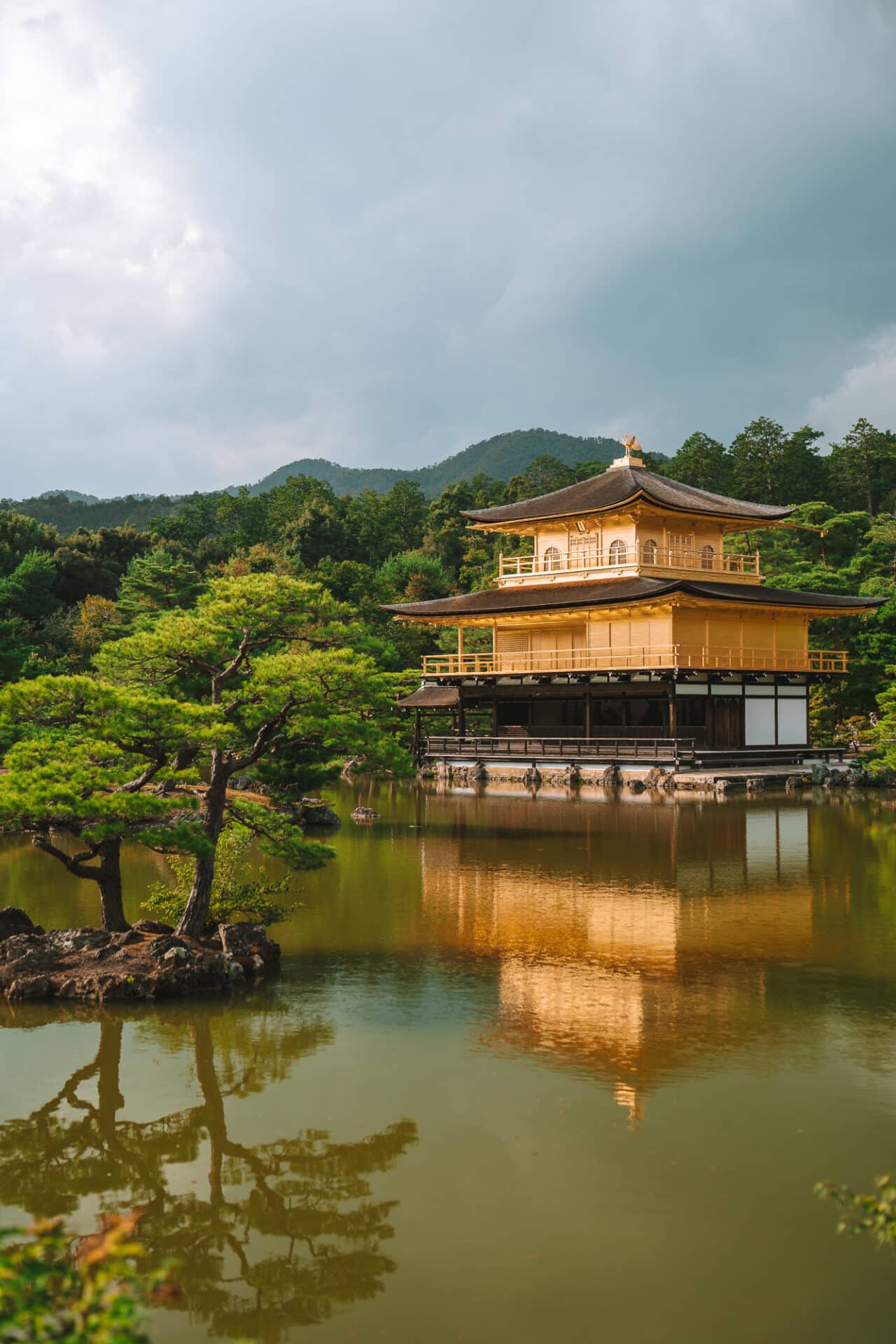 Kinkaku-Ji, Golden Temple, Kyoto
Kinkaku-Ji, Golden Temple, Kyoto
Afternoon: Arashiyama Bamboo Grove
Head west of the town to Arashiyama Bamboo Grove. As one of many metropolis’s most recognizable sights, it is a must-see in your 2 days in Kyoto. You’ll be able to entry it immediately from the principle avenue of Arashiyama, somewhat to the north of the doorway to Tenryu-ji Temple, which you also needs to go to when you’re within the space.
There’s one essential path by way of the bamboo forest grove, which leads slowly uphill. The thick bamboo encloses the path on both facet, forming extremely picturesque partitions of bamboo that you simply’ve seemingly seen in your social media feed. When you attain the highest of the hill, you’ll see the doorway to the Okochi-Sanso Villa proper in entrance of you. That is additionally a pleasant place to go to, with stunning gardens and an unbelievable view of the town.
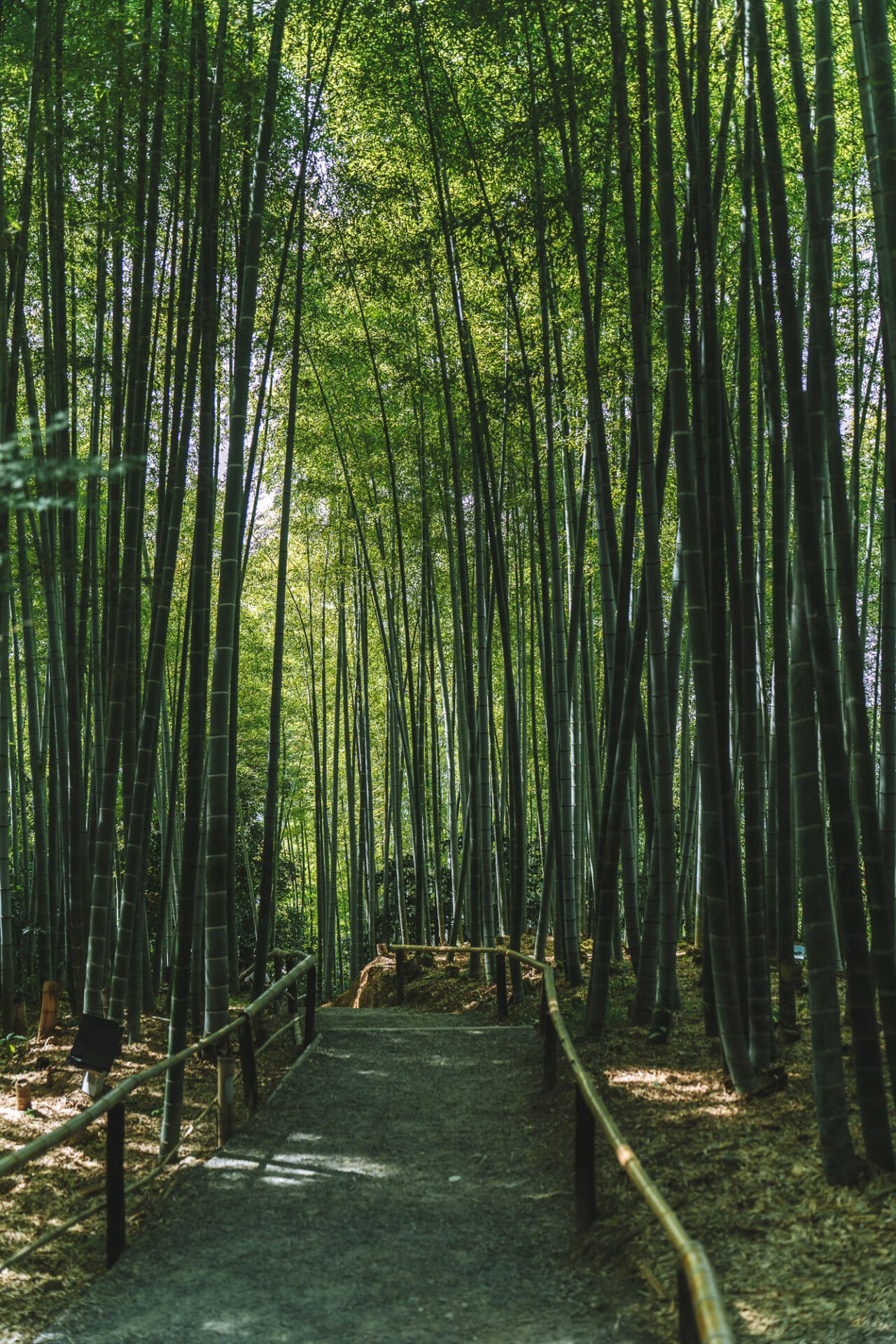
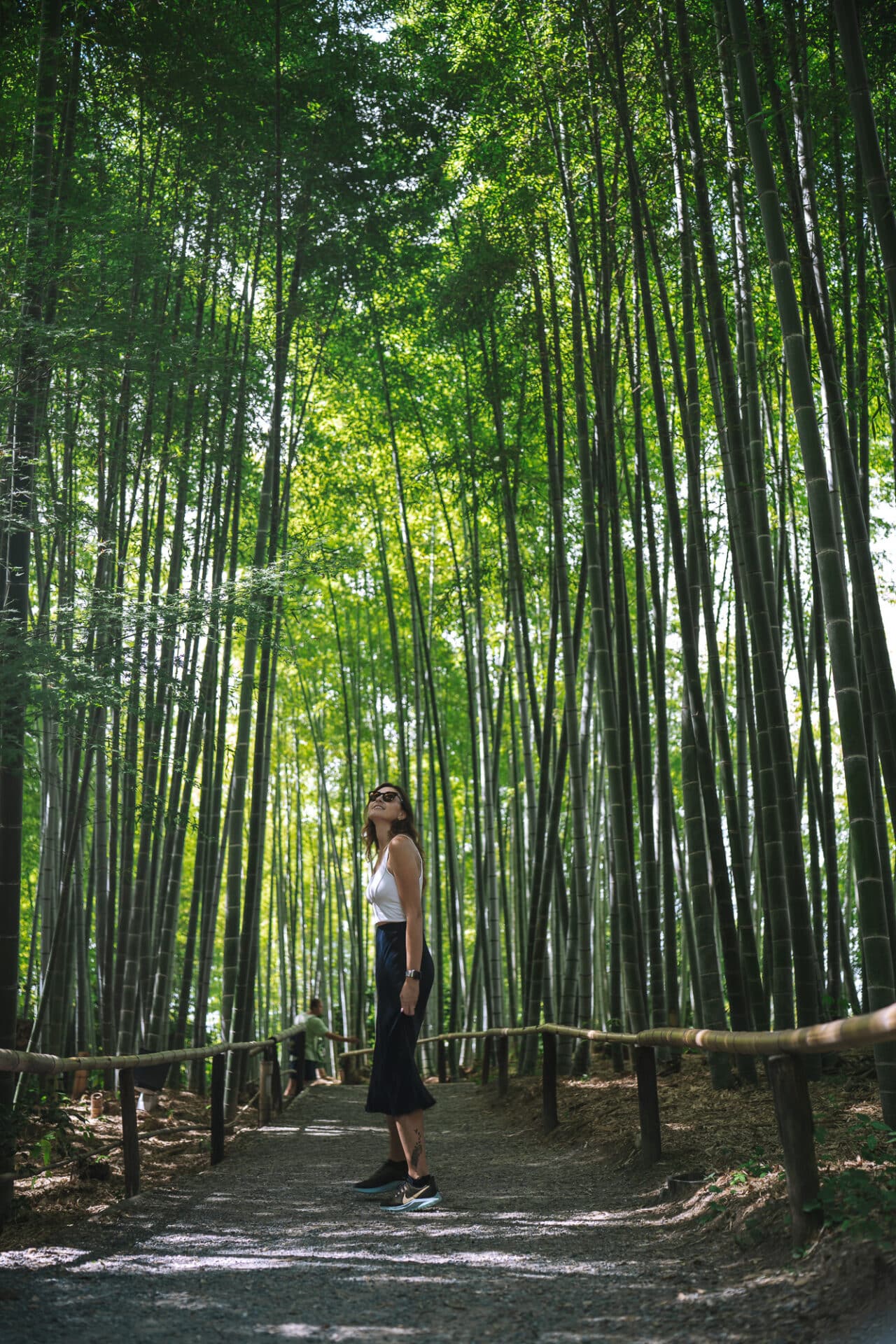
Tenryu-ji
Then, head over to Tenryu-ji, a serene Zen temple that includes teahouses and expansive gardens. It’s the pinnacle temple of the Tenryū-ji department of the Rinzai sect of Zen Buddhism and can also be a UNESCO World Heritage Web site. It’s particularly stunning in Spring and Fall when the cherry blossoms and Fall foliage come alive.
Sundown: Fushimi Inari Shrine
To complete off this 2 day Kyoto itinerary, we extremely advocate a sundown hike to Fushimi Inari Taisha. This is likely one of the most well-known shrines in Kyoto, so it will likely be busy it doesn’t matter what time of the day. However, sundown is usually a lot quieter, and we discovered that it will get much less busy the upper you go up the mountain.
To achieve it, take the JR Nara Line and get off on the Fushimi Inari Station.
The shrine is legendary for 1000’s of torii gates, which straddle the paths behind the principle temple buildings that lead into the forest of Mount Inari. It’s thought-about crucial shrine devoted to Inari, the Shinto god of rice.
Behind the shrine’s essential corridor is the doorway to the torii gate-covered climbing path. The pilgrimage to the summit of Mount Inari takes about 1-2 hours (return). In case you’re not eager on an extended stroll at sundown, you possibly can stroll as much as the Yotsutsuji intersection roughly midway up the mountain. This spot presents views of the gorgeous metropolis of Kyoto and presents a superb different for many who don’t need to stroll up all the best way. Don’t fear, the views on the high don’t get higher, so that you received’t be lacking out by not making it to the highest.
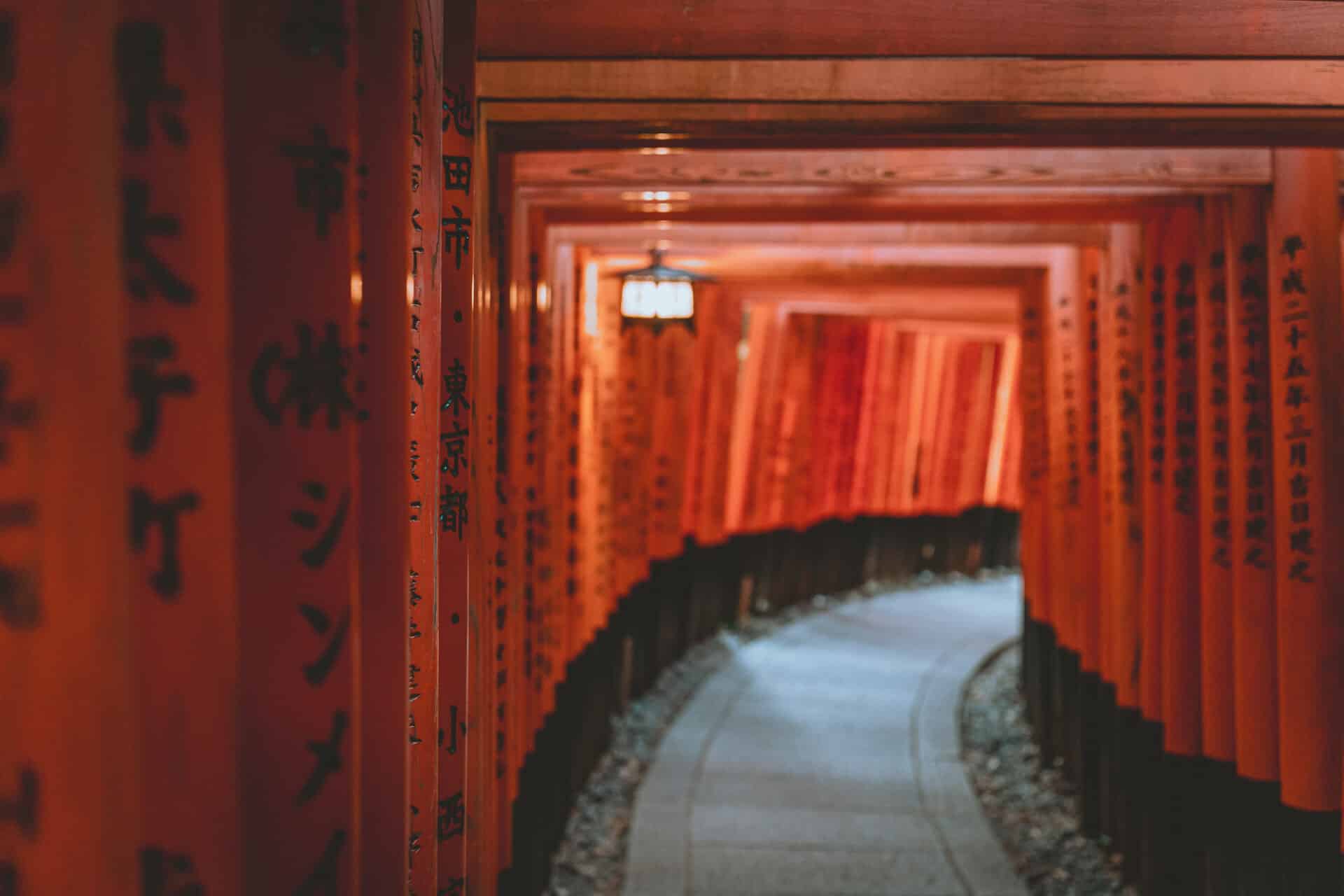 Fushimi Inari Taisha
Fushimi Inari Taisha
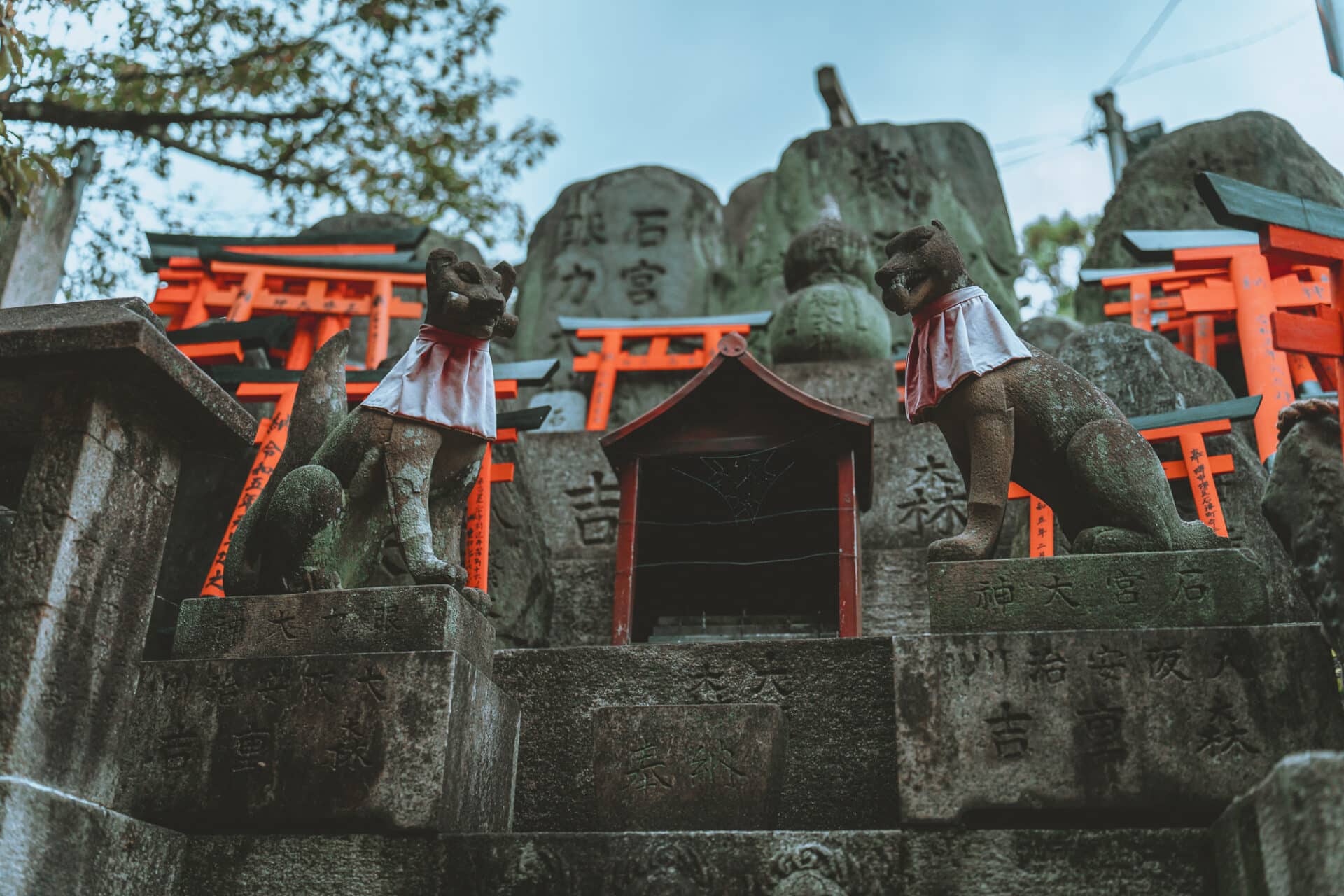 Fushimi Inari Taisha
Fushimi Inari Taisha
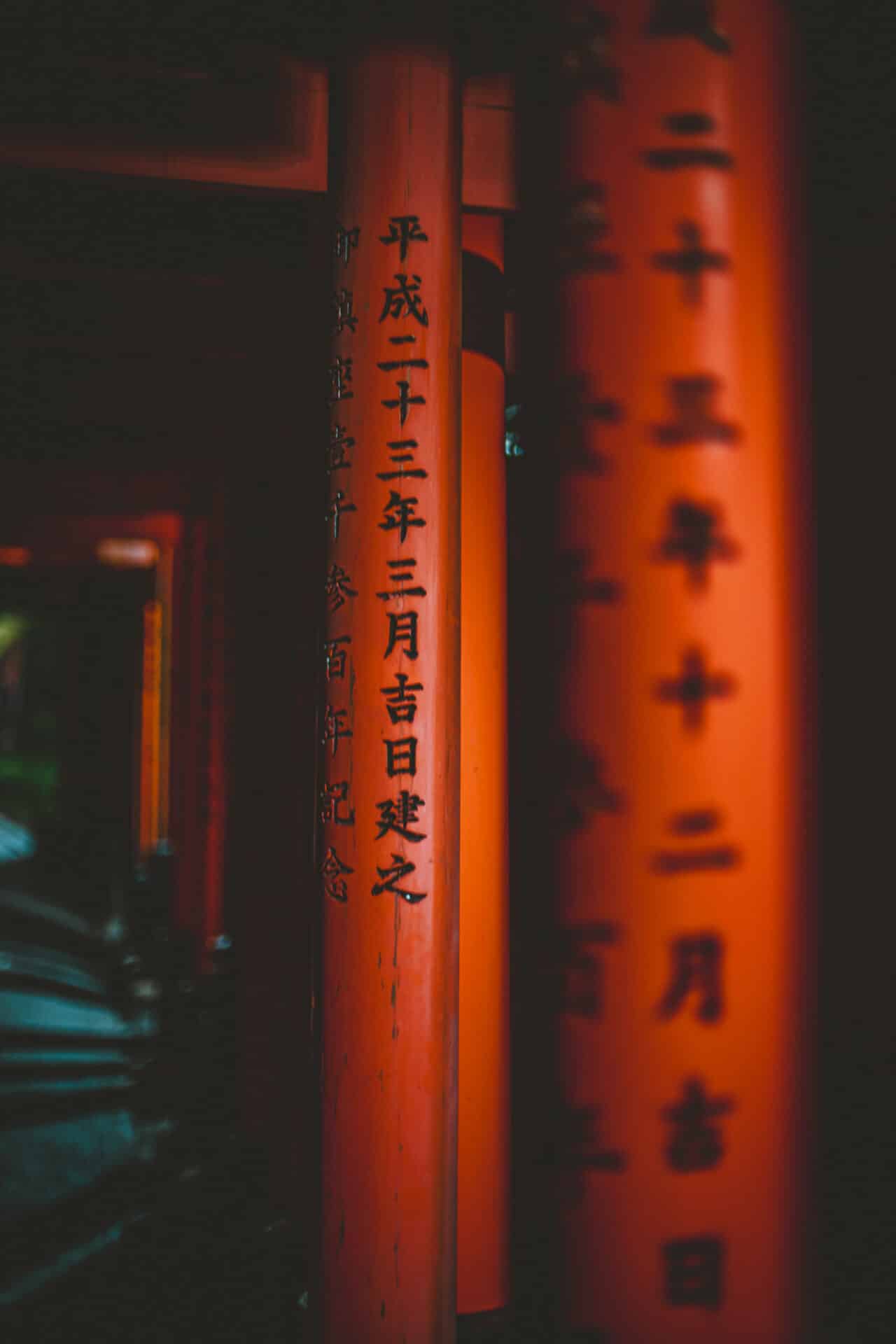
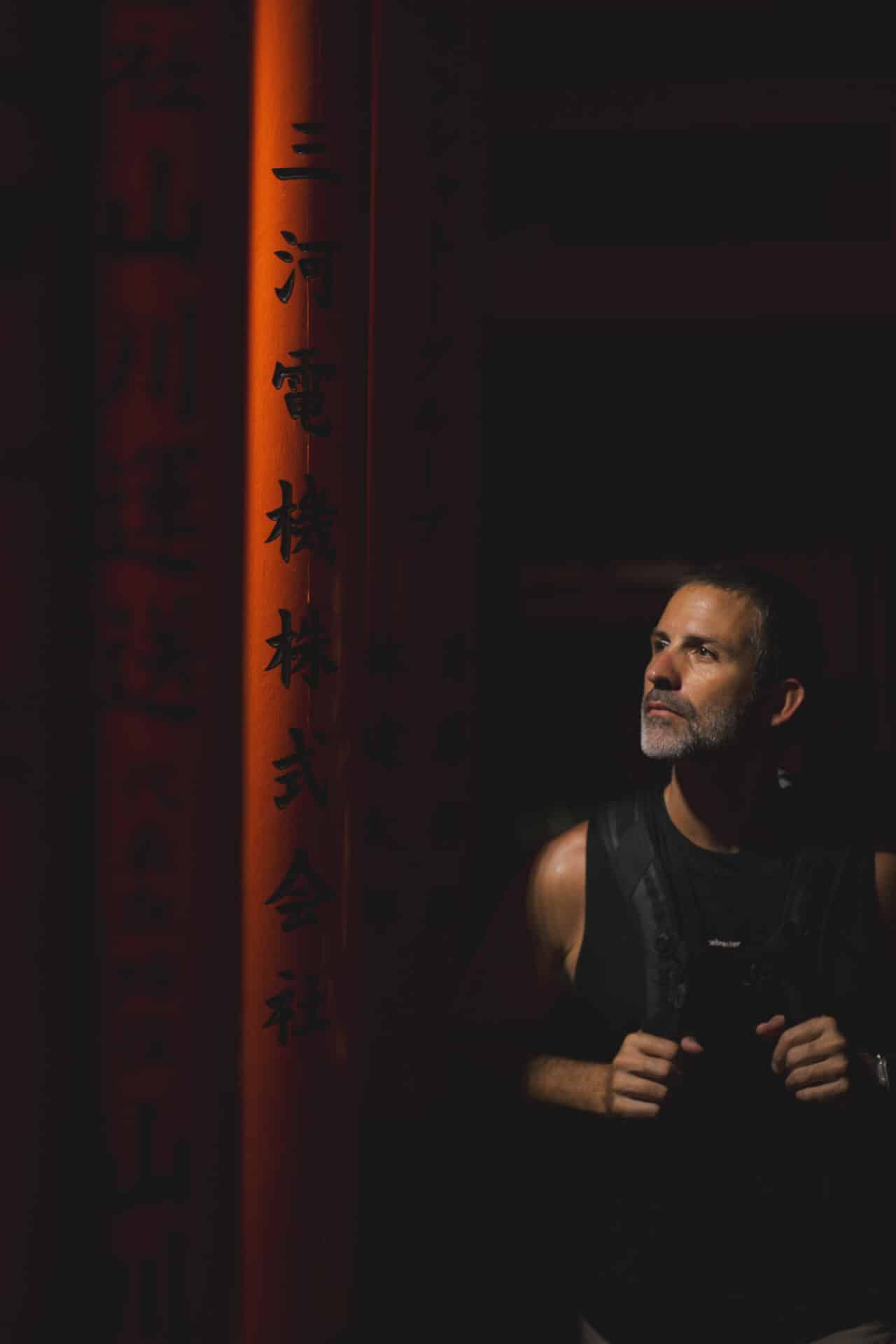
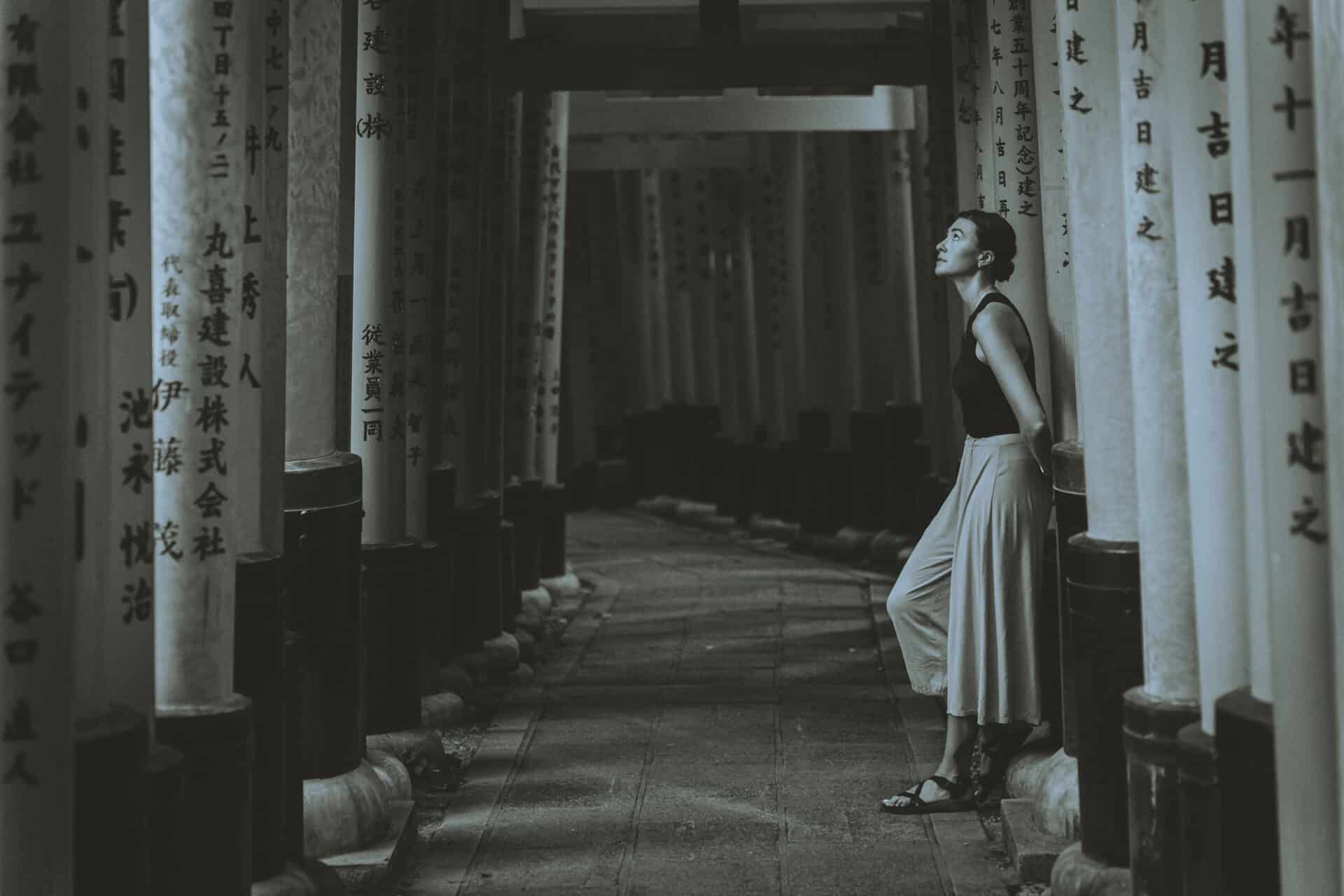 At Fushimi Inari Taisha
At Fushimi Inari Taisha
Different Issues to Do in Kyoto:
When you’ve got greater than 2 days in Kyoto, there’s a lot extra so as to add to your itinerary. A couple of additional days will provide you with the chance so as to add some conventional foods and drinks experiences and cultural actions to your listing.
Listed below are some suggestions to fill in your time for 3+ days within the metropolis.
Gekkeikan Okura Sake Museum
For foodie travellers, this brewery and museum tour in Kyoto is a good way to dive into the standard sake tradition. This tour consists of an introduction to sake making and a guided tasting paired with conventional Japanese snacks.
 Kyoto Sake Museum
Kyoto Sake Museum
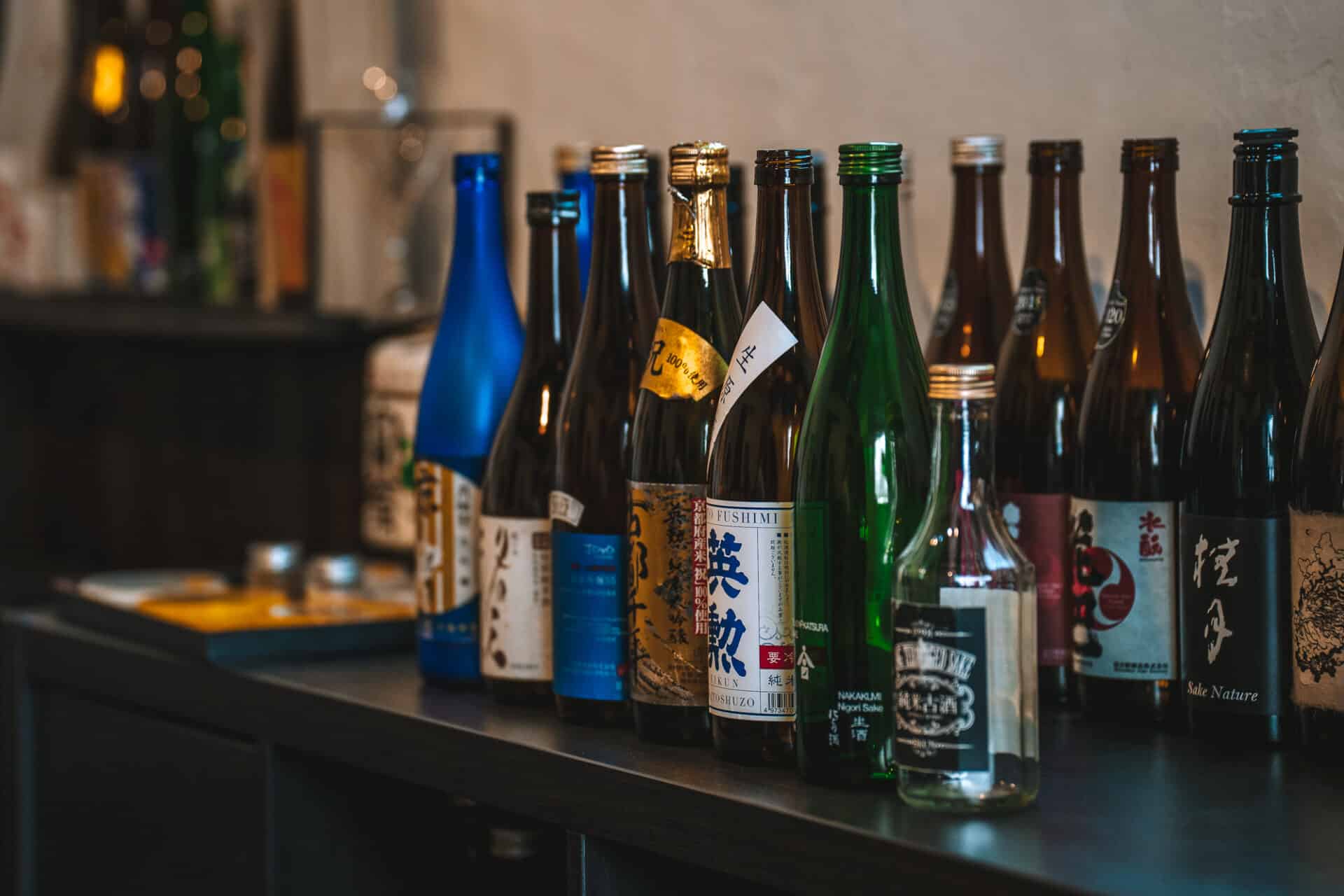 Kyoto Sake tasting
Kyoto Sake tasting
Discover Fushimi Sake Village
The Fushimi Sake District is a standard sake brewing district alongside the Horikawa River in southern Kyoto. Residence to almost 40 sake breweries, it’s the right place to delve into the tradition of sake. A couple of of the breweries are open to the general public, and a few outlets supply an opportunity to style and buy their merchandise, in addition to have a chew to eat.
Samurai and Ninja Museum
Situated proper in downtown Kyoto, the Samurai and Ninja Museum is a enjoyable exercise for many who are travelling with youngsters. The museum options Edo-period armour and sword shows, together with family-friendly directions on warrior abilities. Guests can costume up as samurai, throw ninja stars, use a blow gun and check out archery.
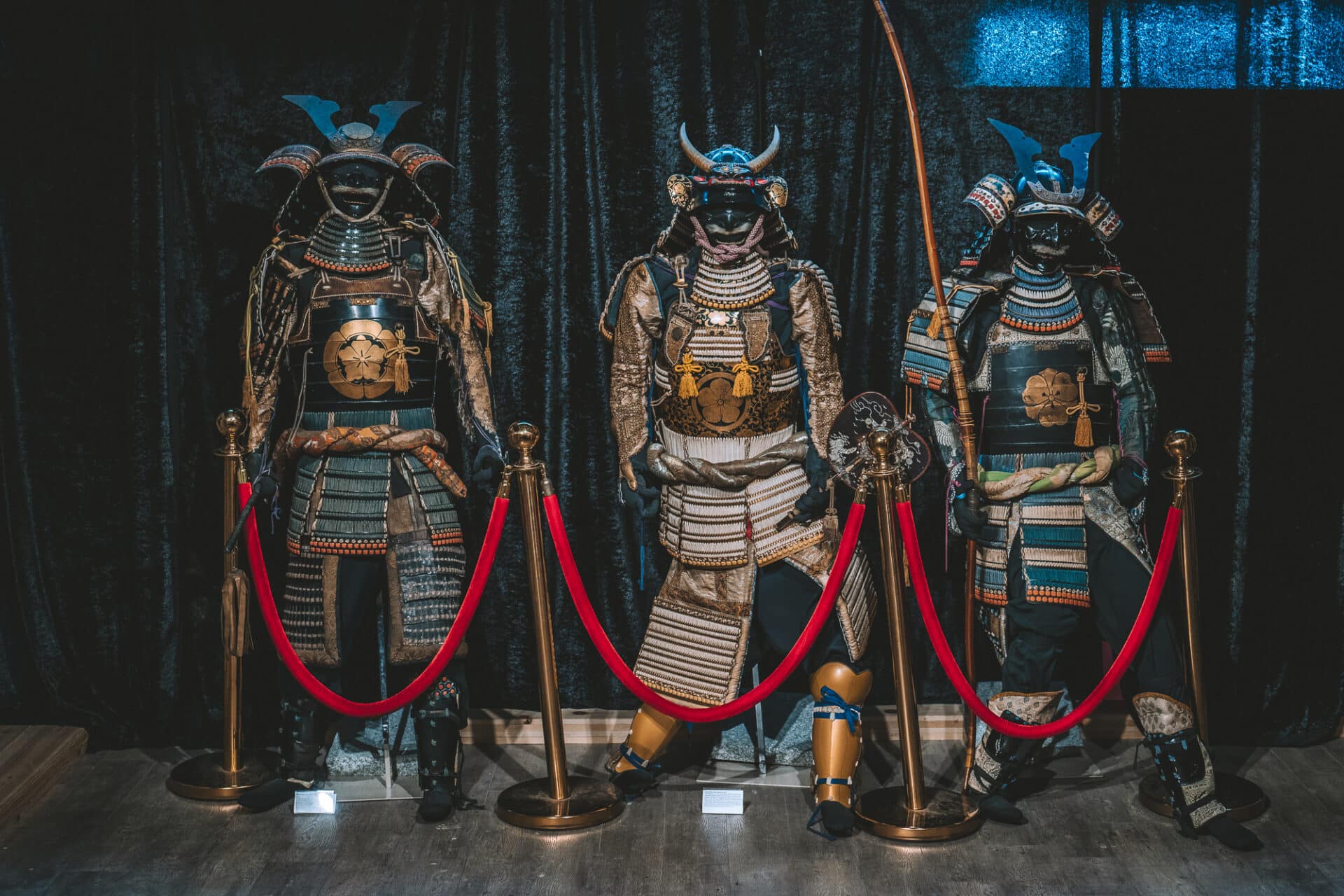 Uniform replicas on the Samurai Show
Uniform replicas on the Samurai Show
In search of a extra genuine samurai expertise? Head to Kuma Valley!
Conventional Tea Ceremony
A standard tea ceremony is a necessary expertise for any tea lover in Kyoto. Study concerning the historic ritual in one of many conventional teahouses dotted across the metropolis, study to make matcha, and style it paired with varied sweets and snacks.
You’ll be able to do that Tea Ceremony and Machiya Townhouse Tour or Conventional Tea Ceremony at Jotokuji Temple for a beautiful expertise throughout your Kyoto itinerary.
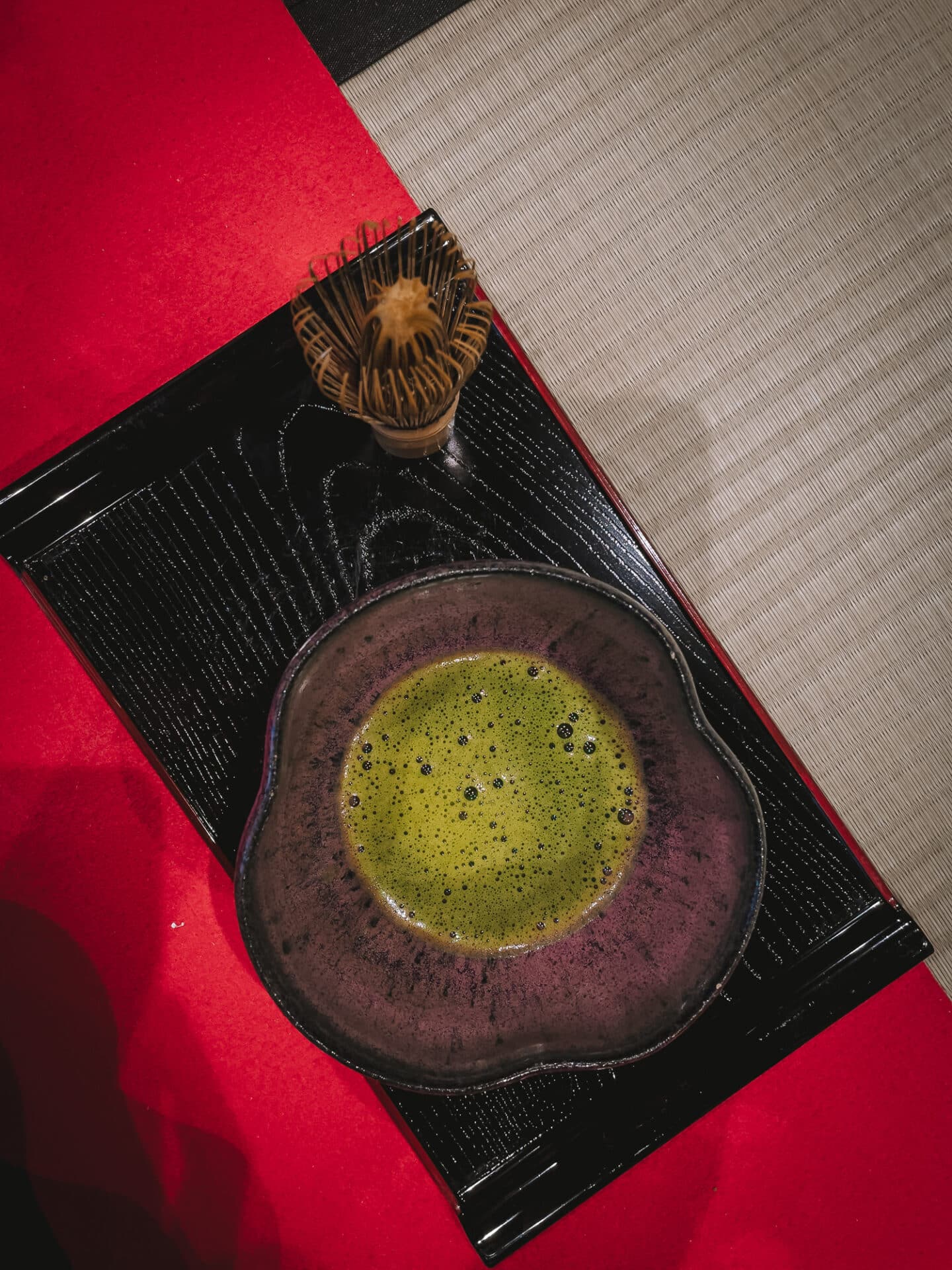
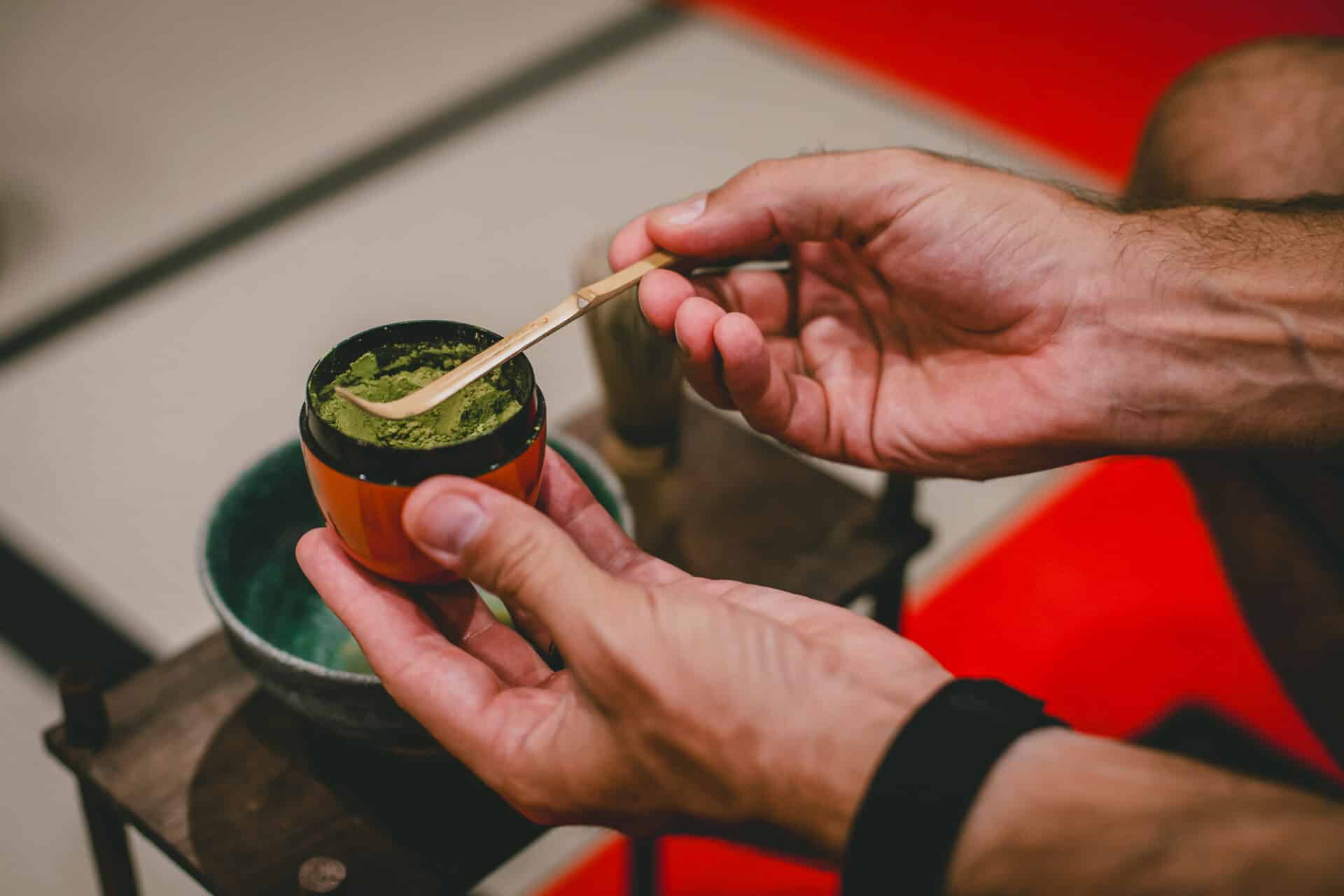
Ryōan-ji Temple
Situated not removed from Kinkaku-ji Temple or Golden Pavilion, this Fifteenth-century Buddhist temple and UNESCO World Heritage Web site can also be price a go to. It’s house to one in all Japan’s most well-known rock gardens, together with some light strolling paths beside a pond and the temple’s essential buildings.
Kyoto Tower
When you’ve got some spare time in your two days in Kyoto, head to Kyoto Tower, an statement tower proper within the heart of the town close to Kyoto Station. The metal tower is the tallest construction in Kyoto, with its statement deck at 100 meters (330 ft) and its spire at 131 meters (425 ft).
You’ll be able to admire panoramic views from the highest and even take pleasure in a romantic dinner at Kyoto Tower Restaurant. Final admission to the statement deck is 8.30pm, so we advocate visiting within the night round sundown time.
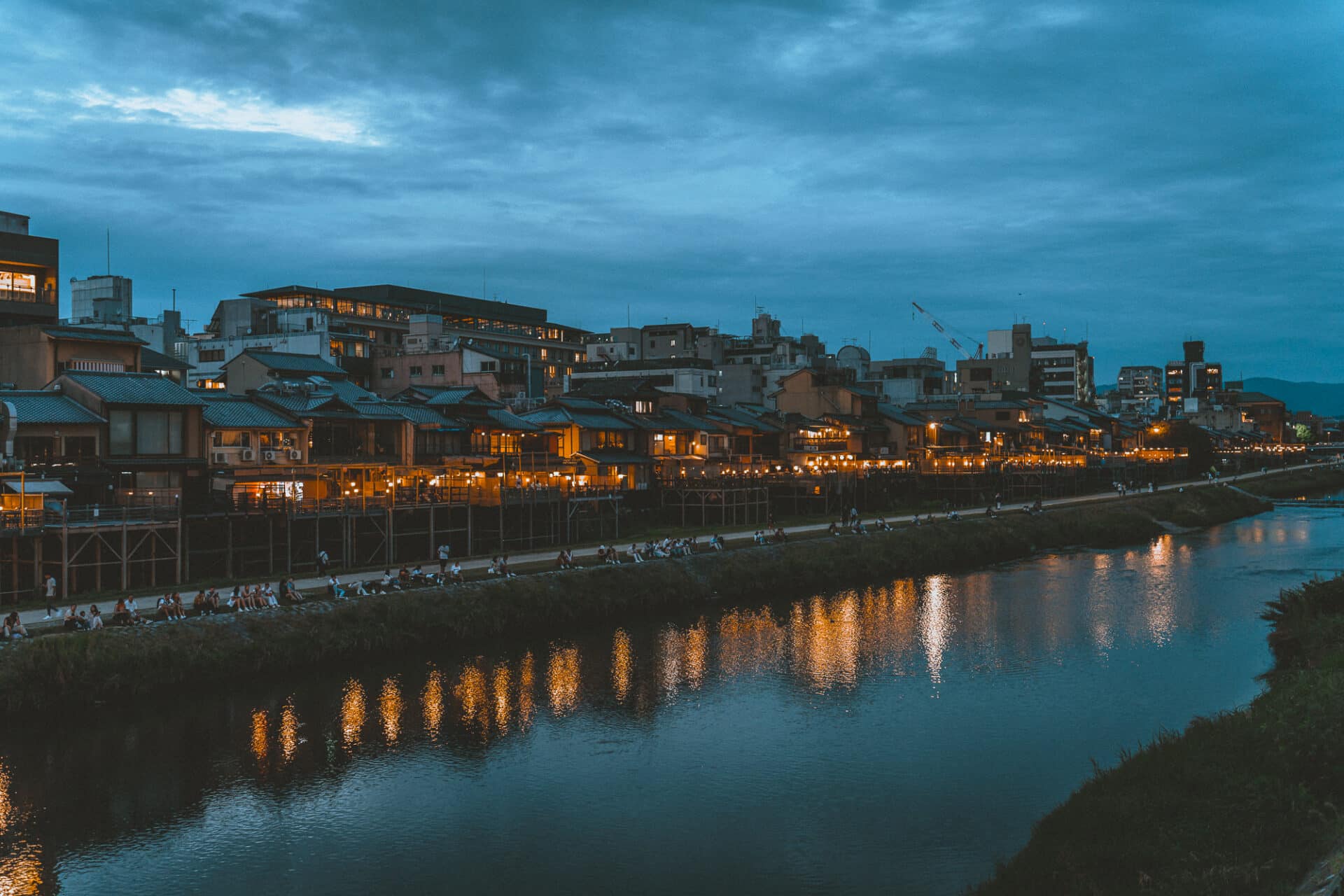 River in Kyoto, Japan
River in Kyoto, Japan

